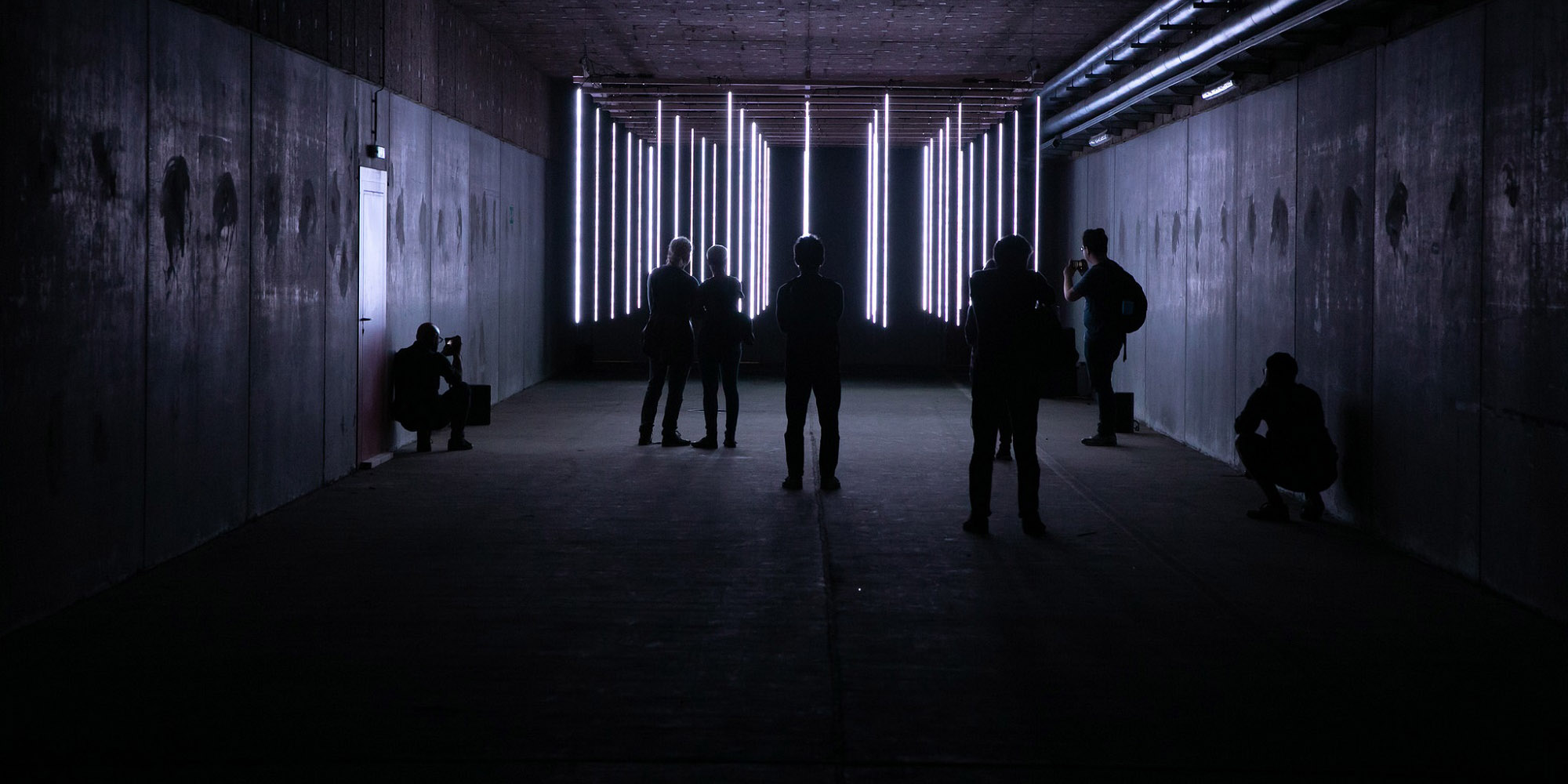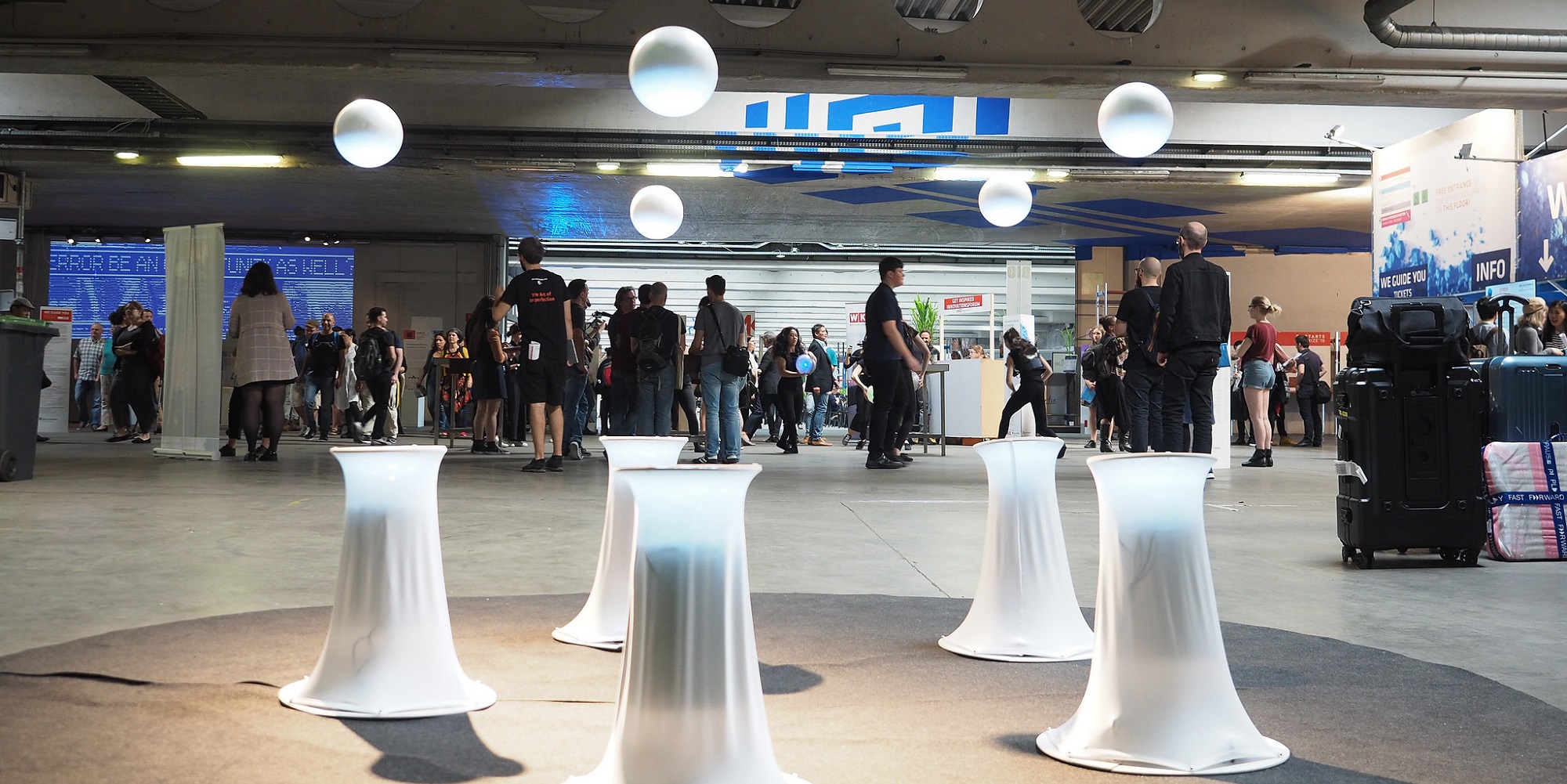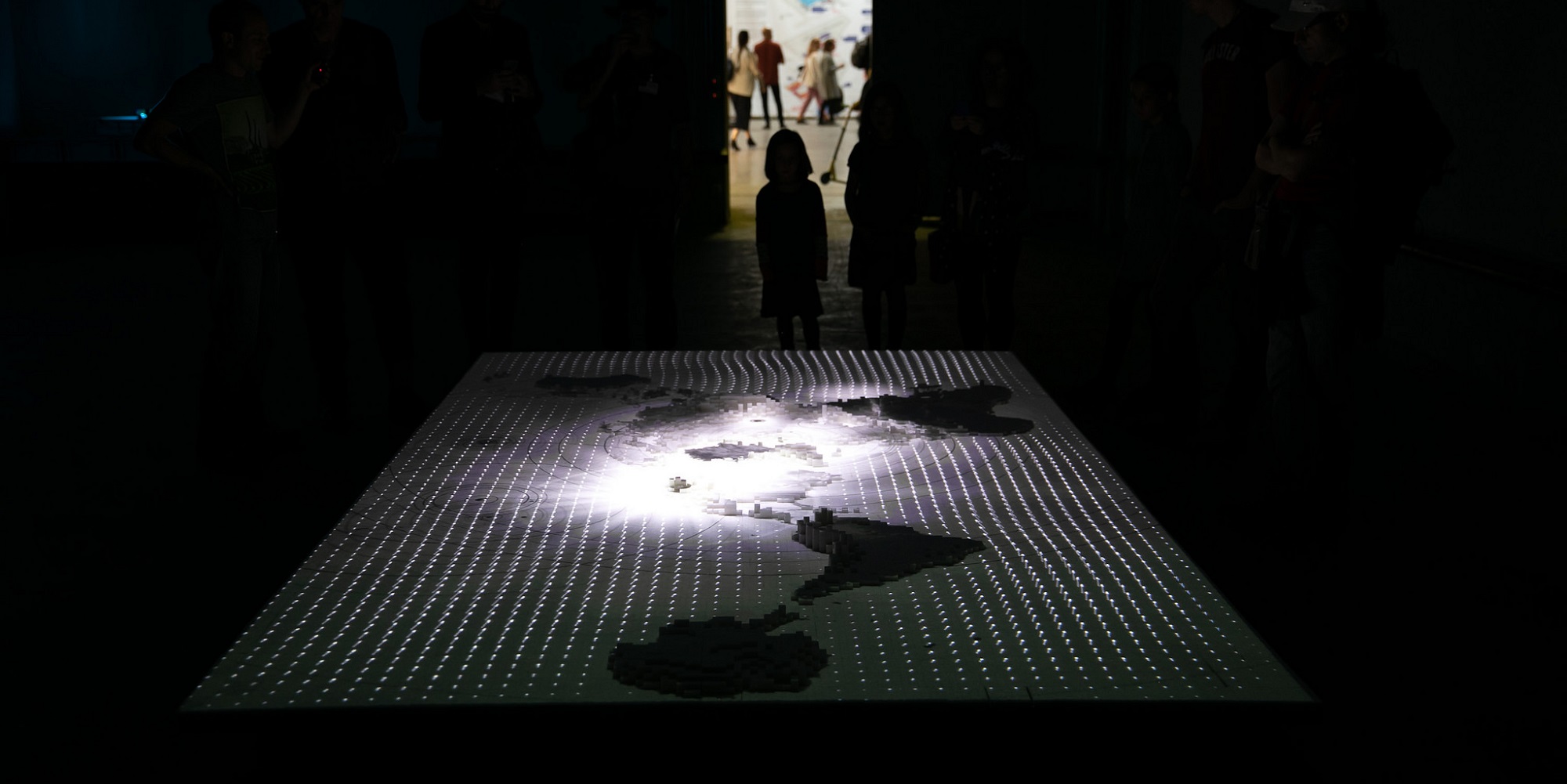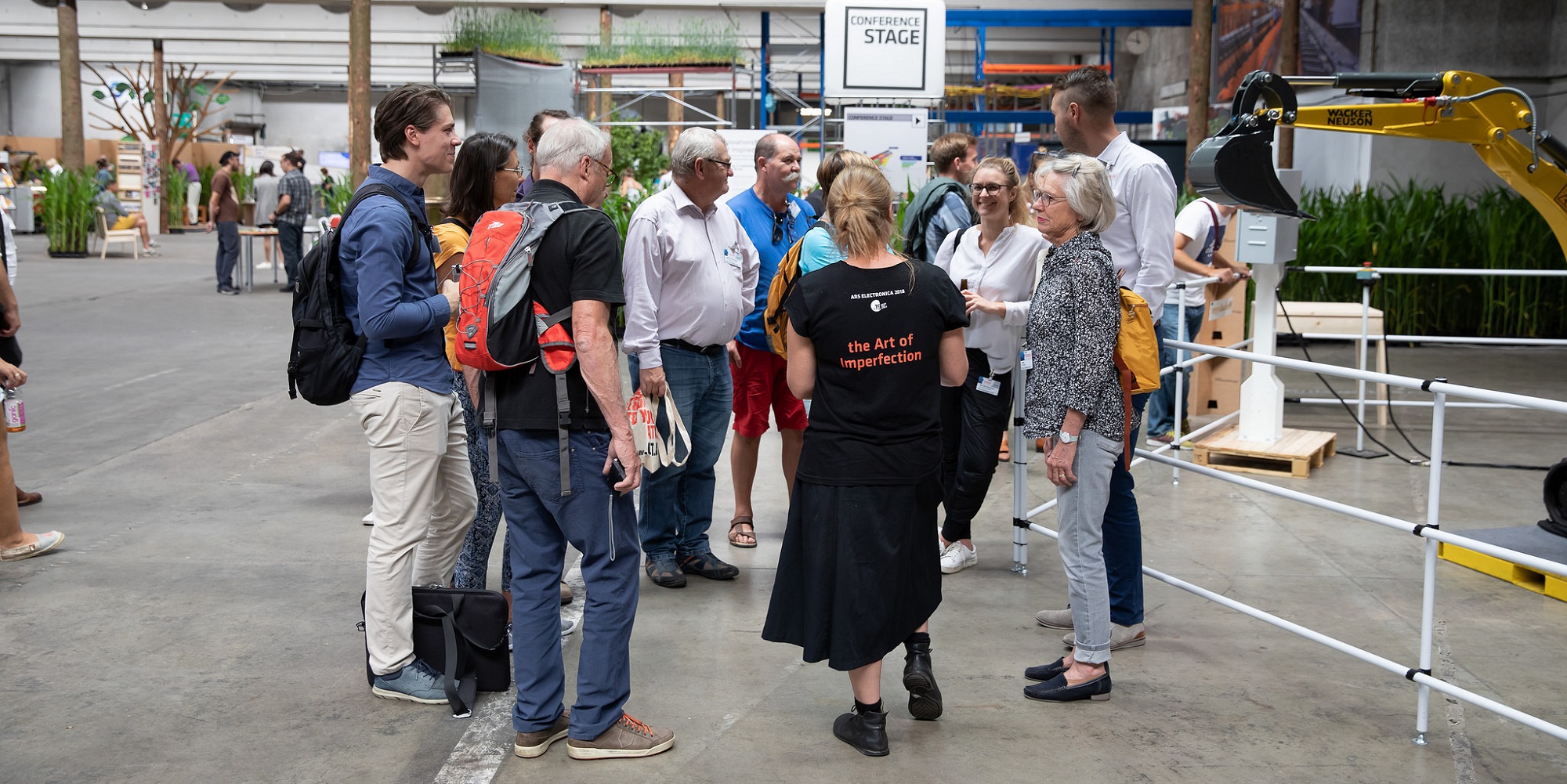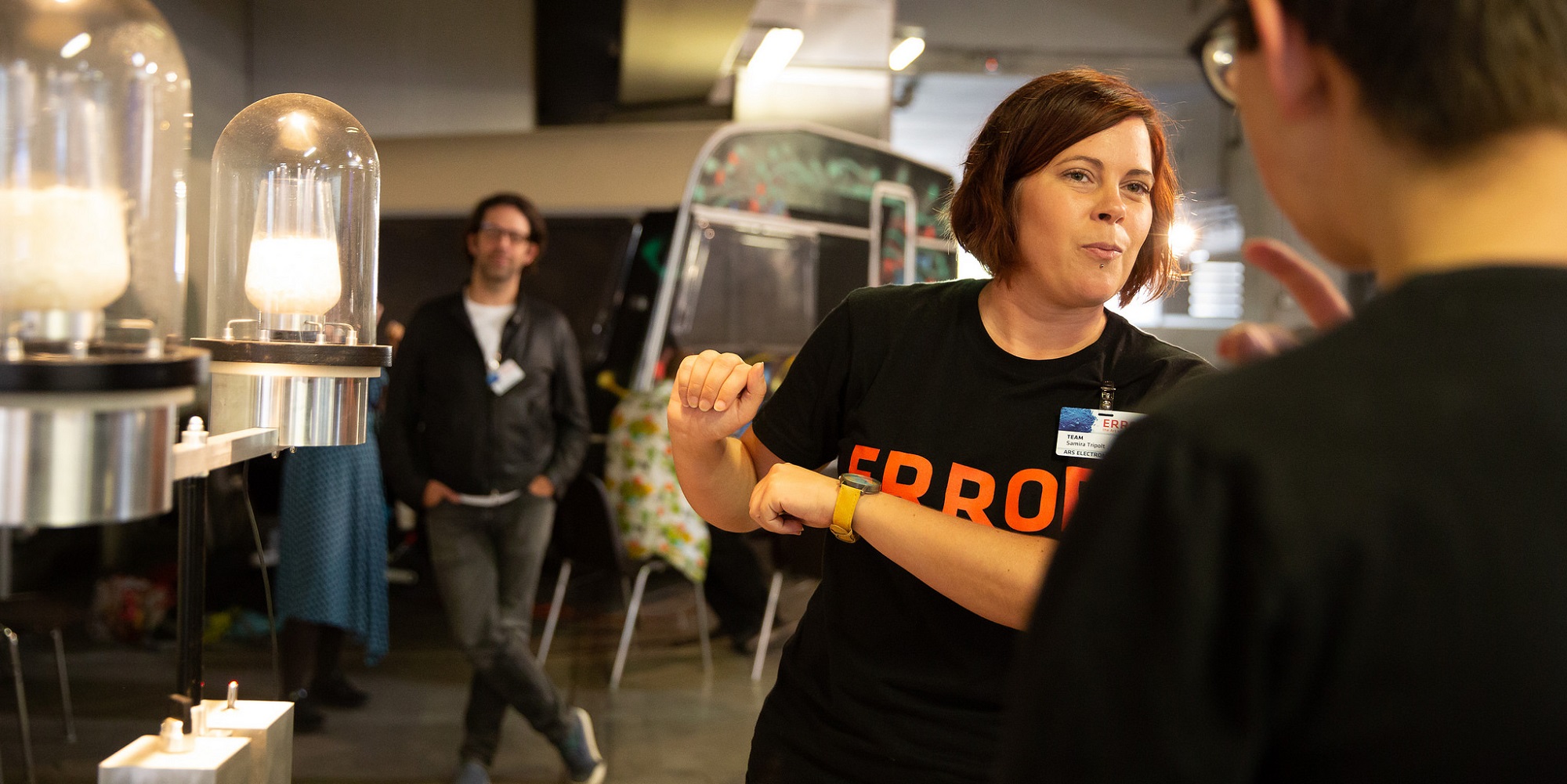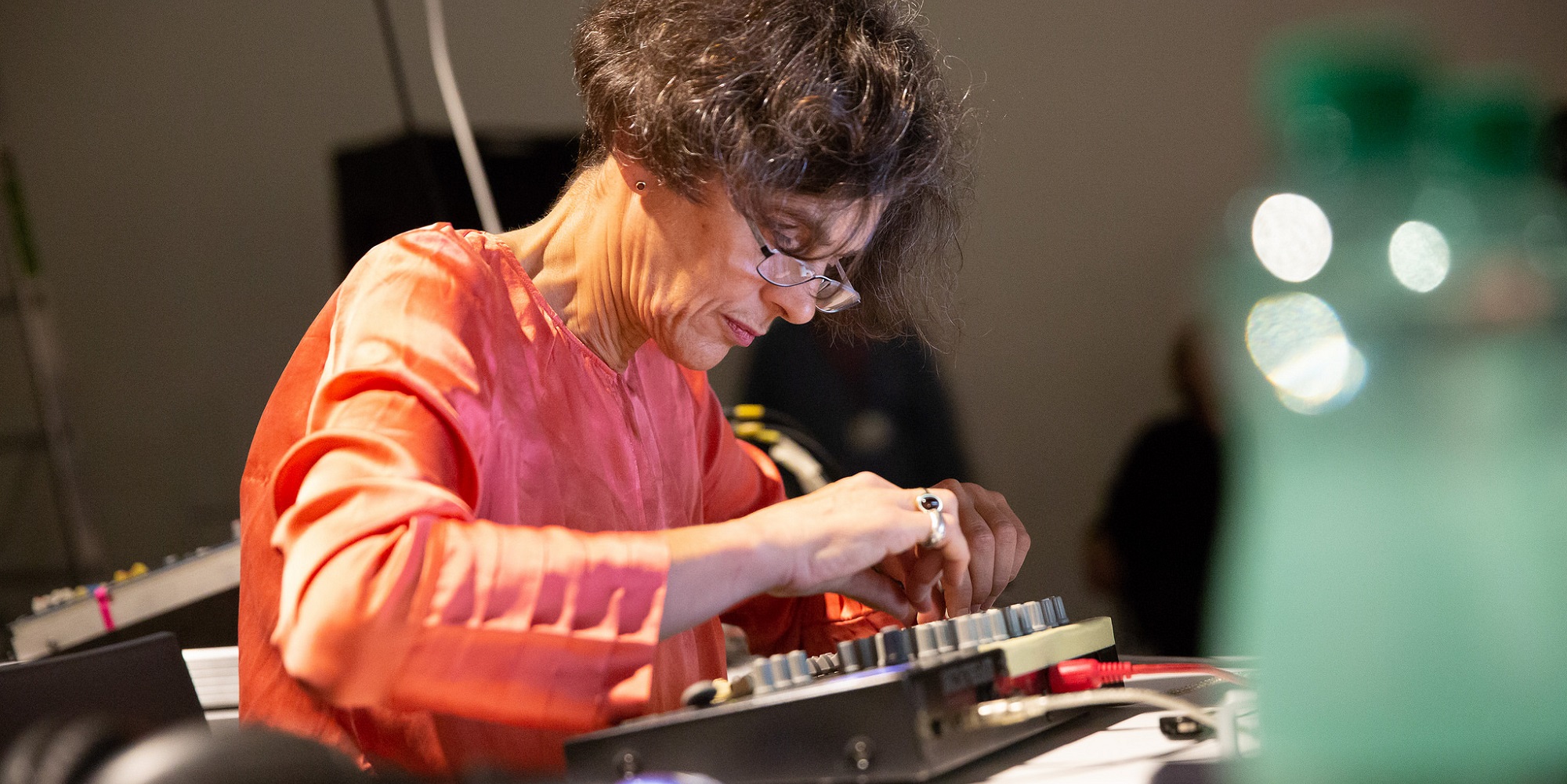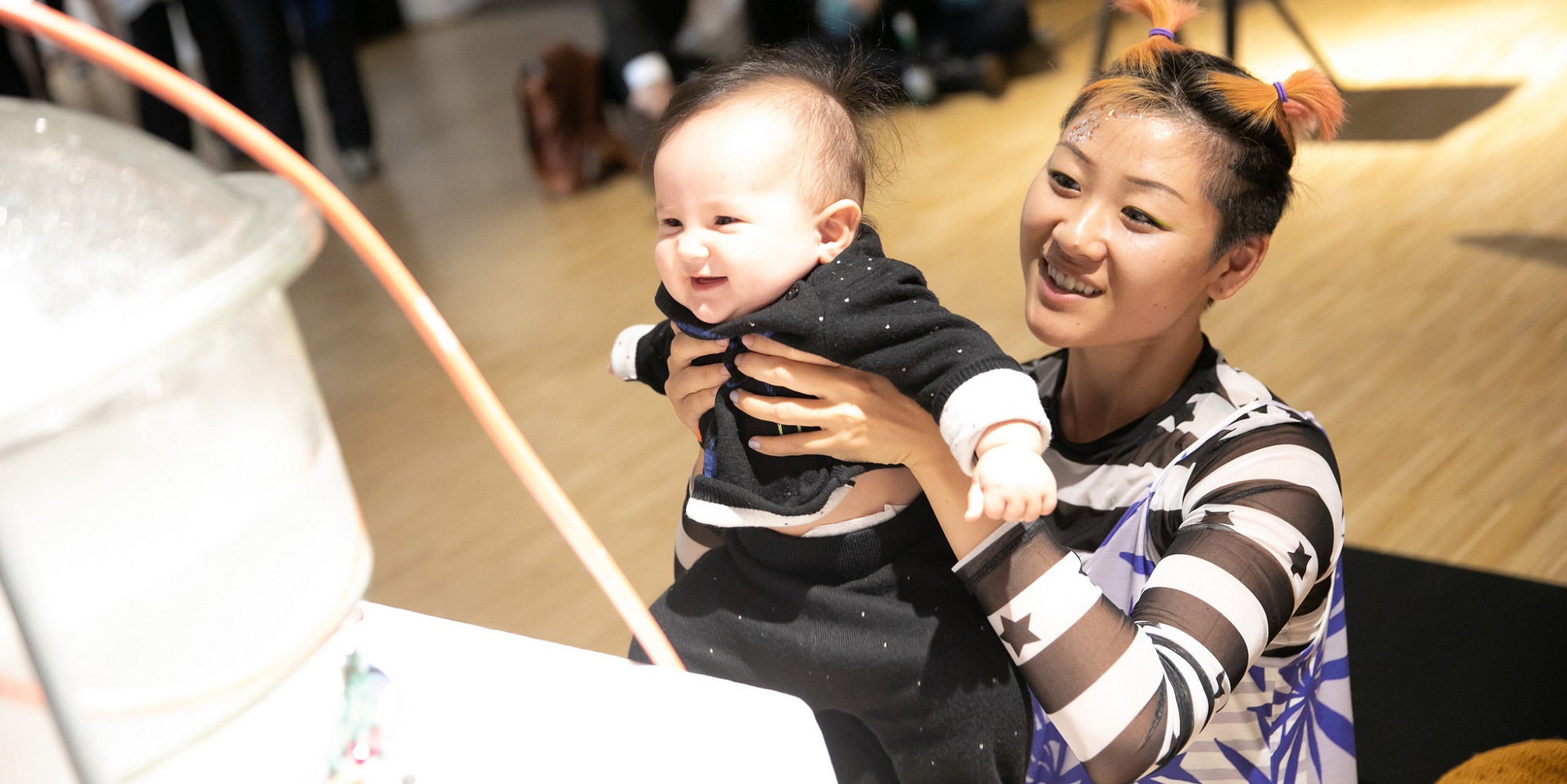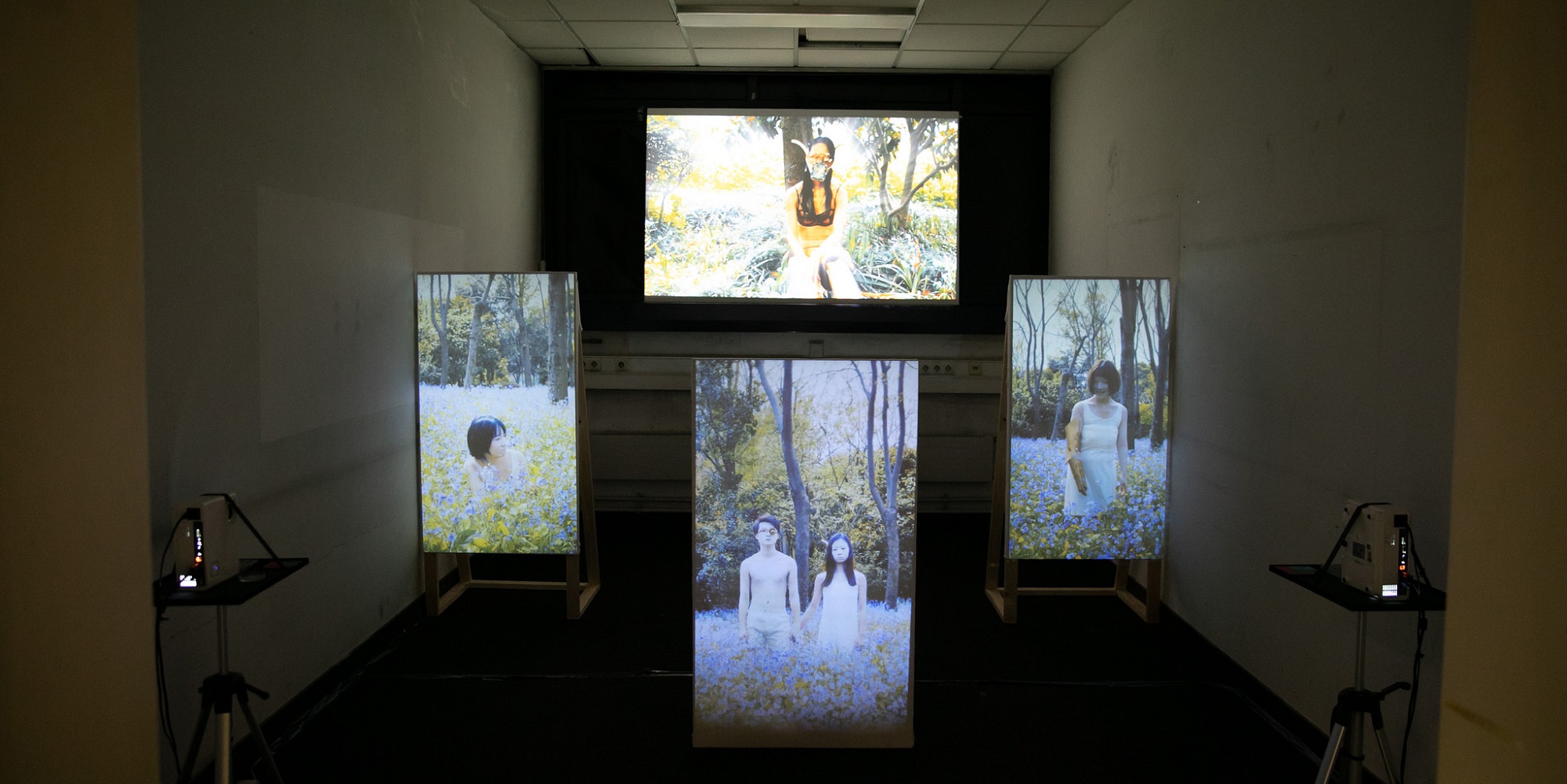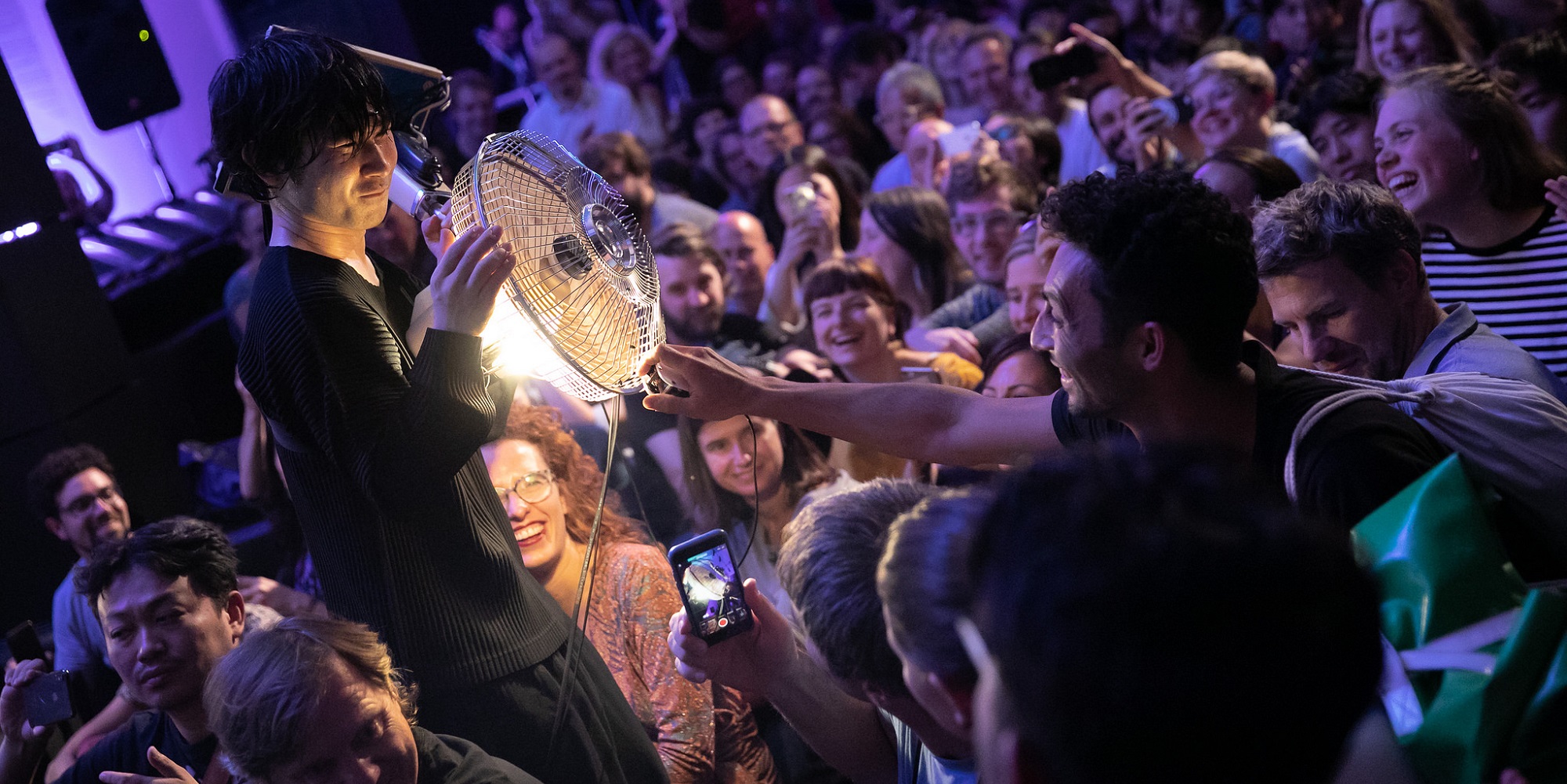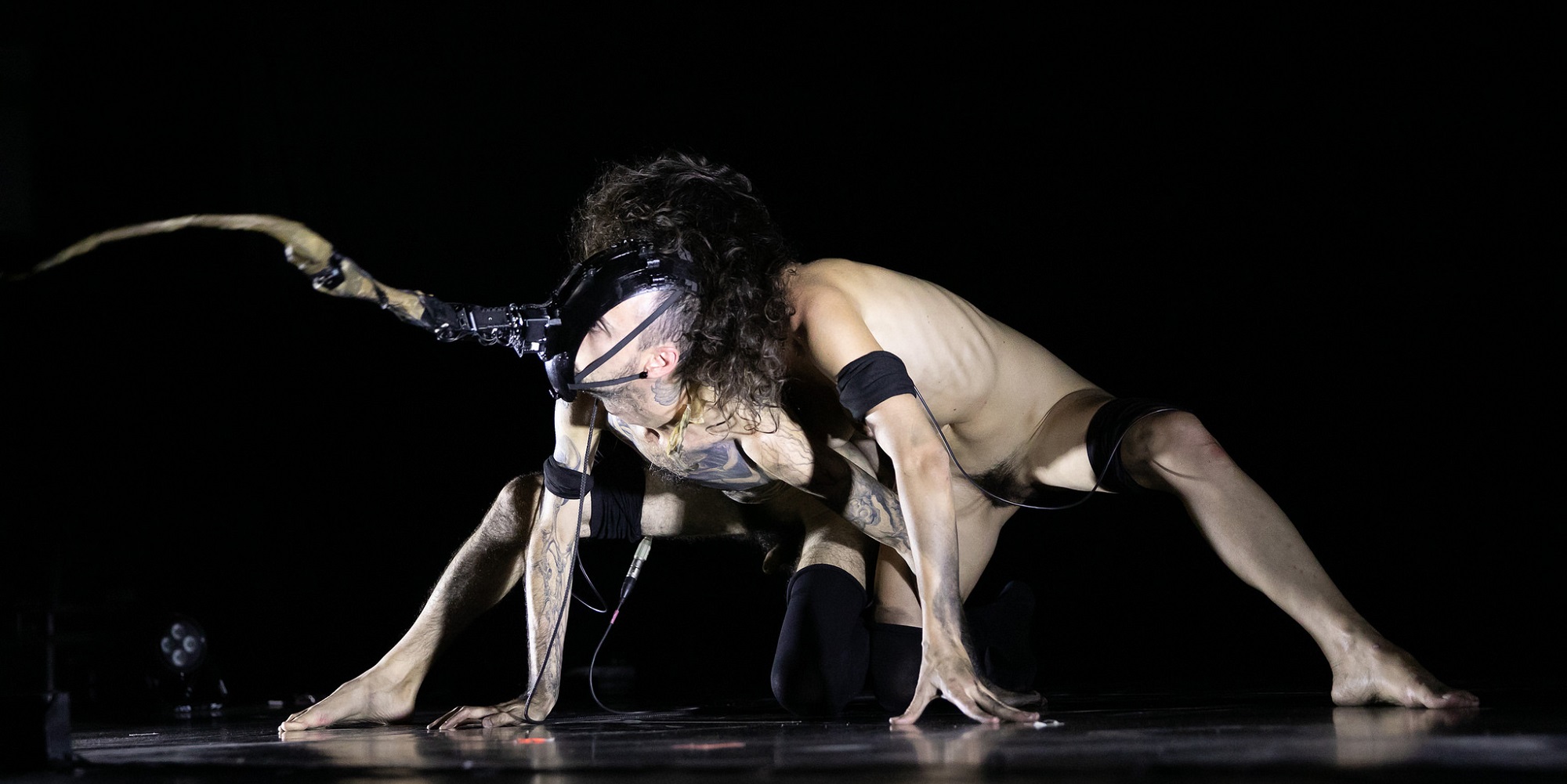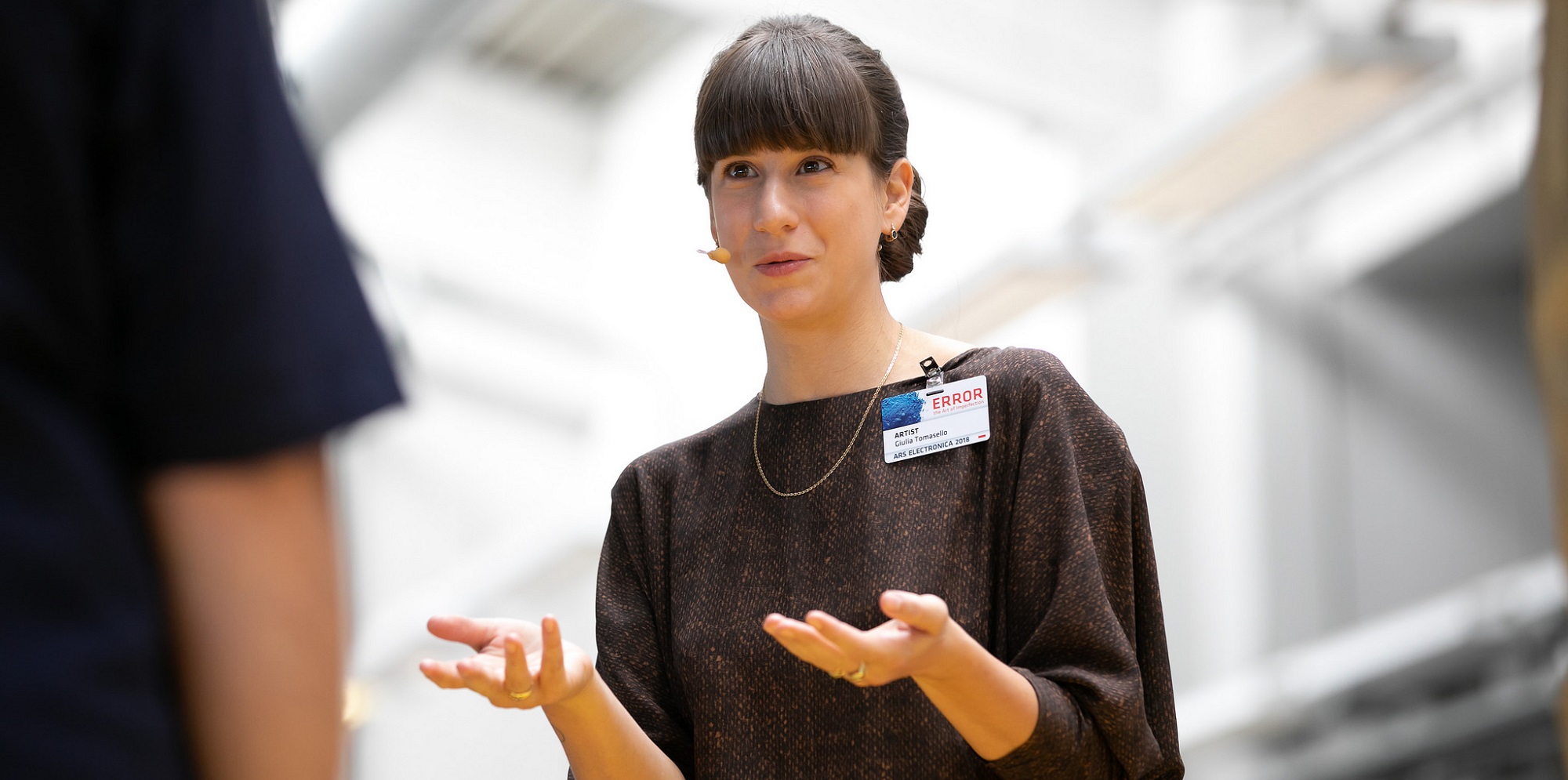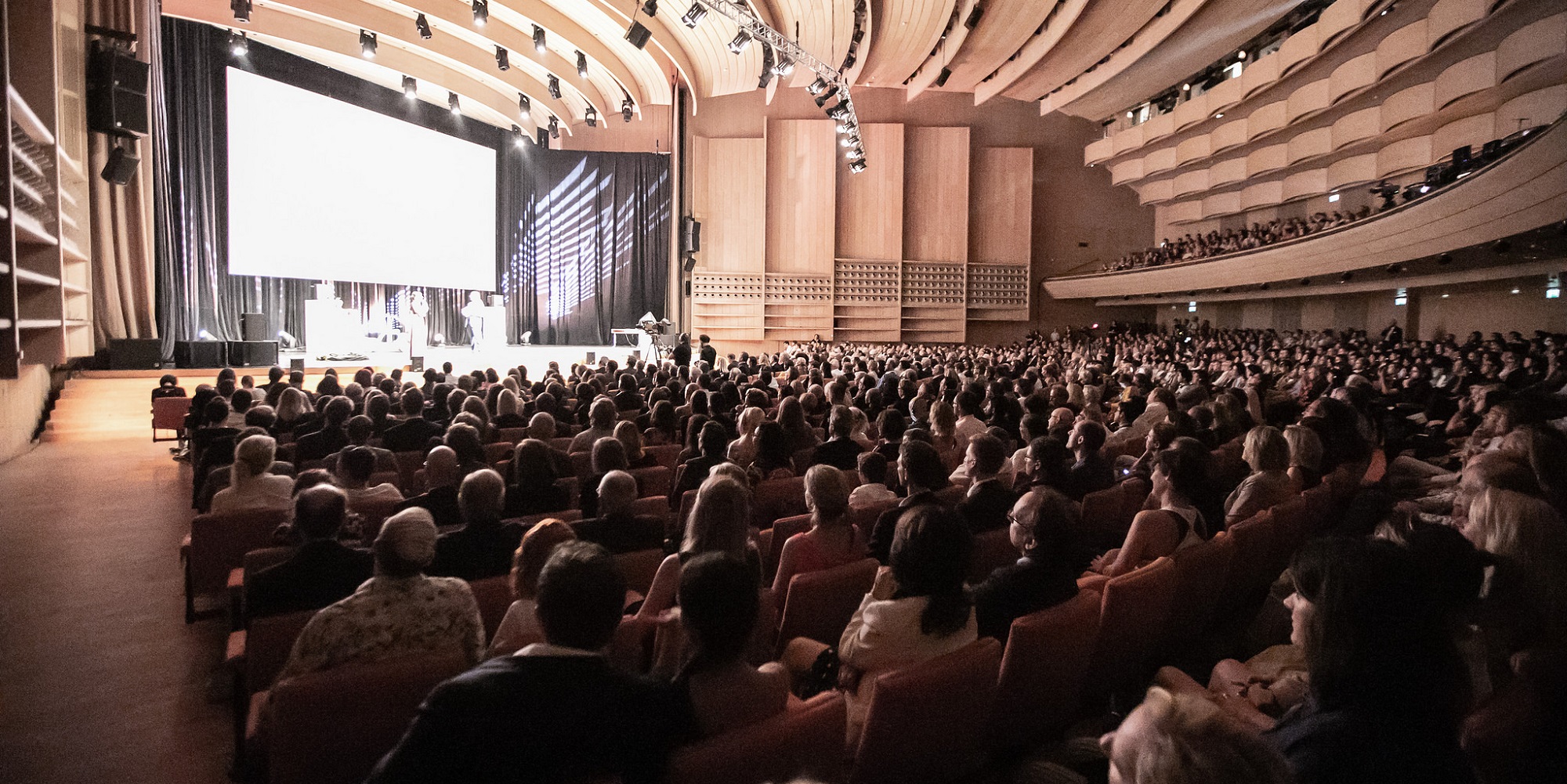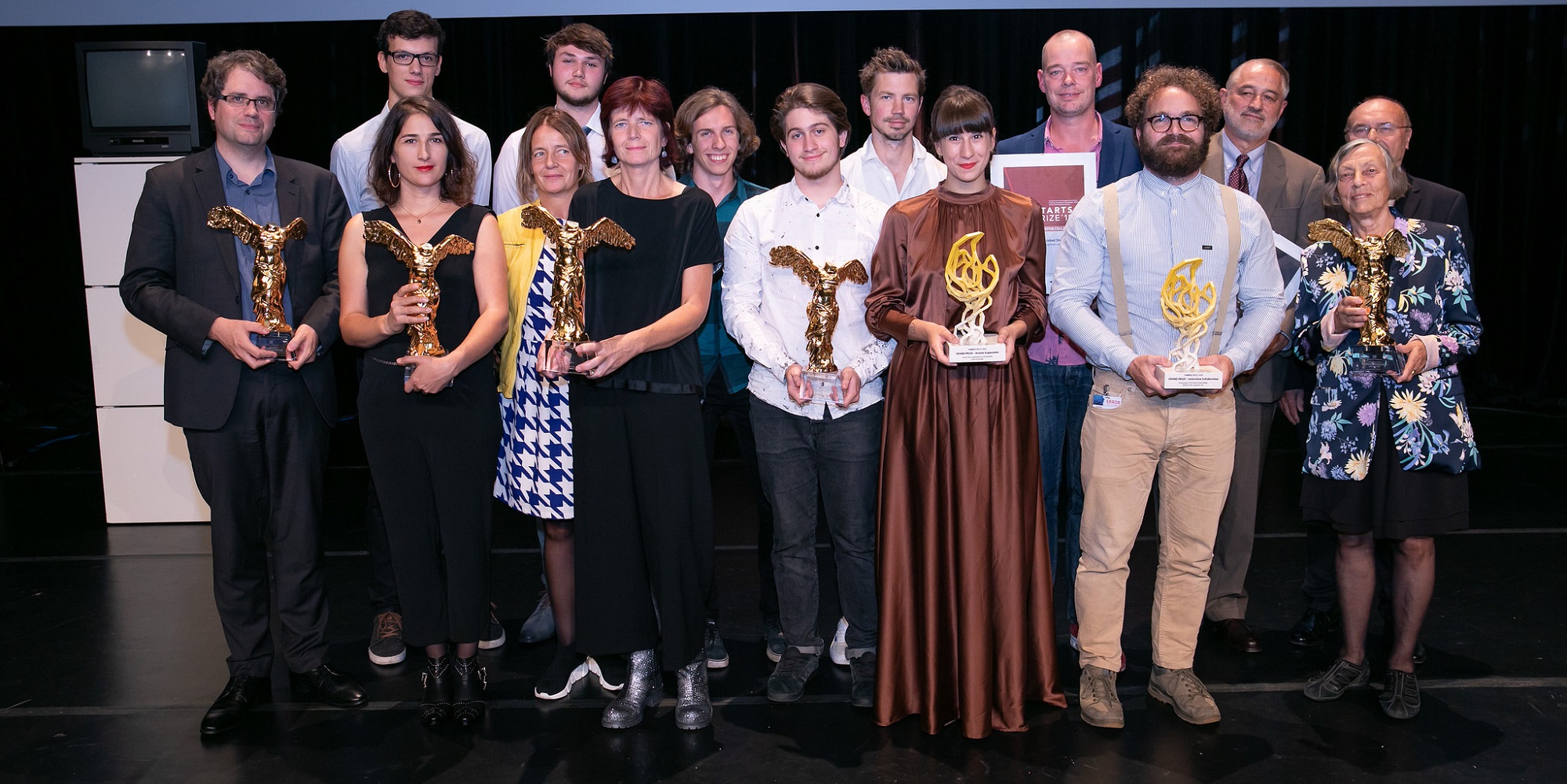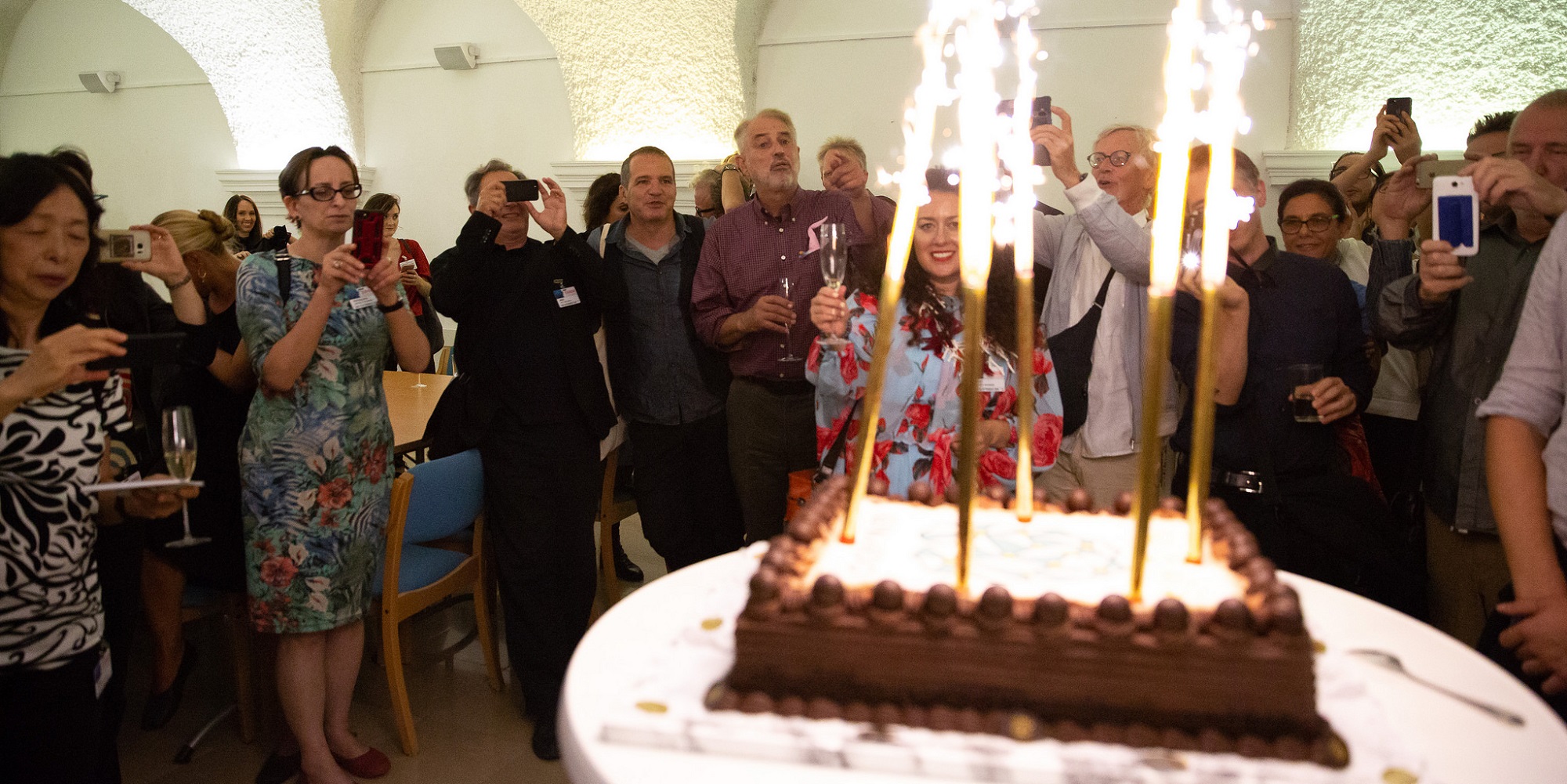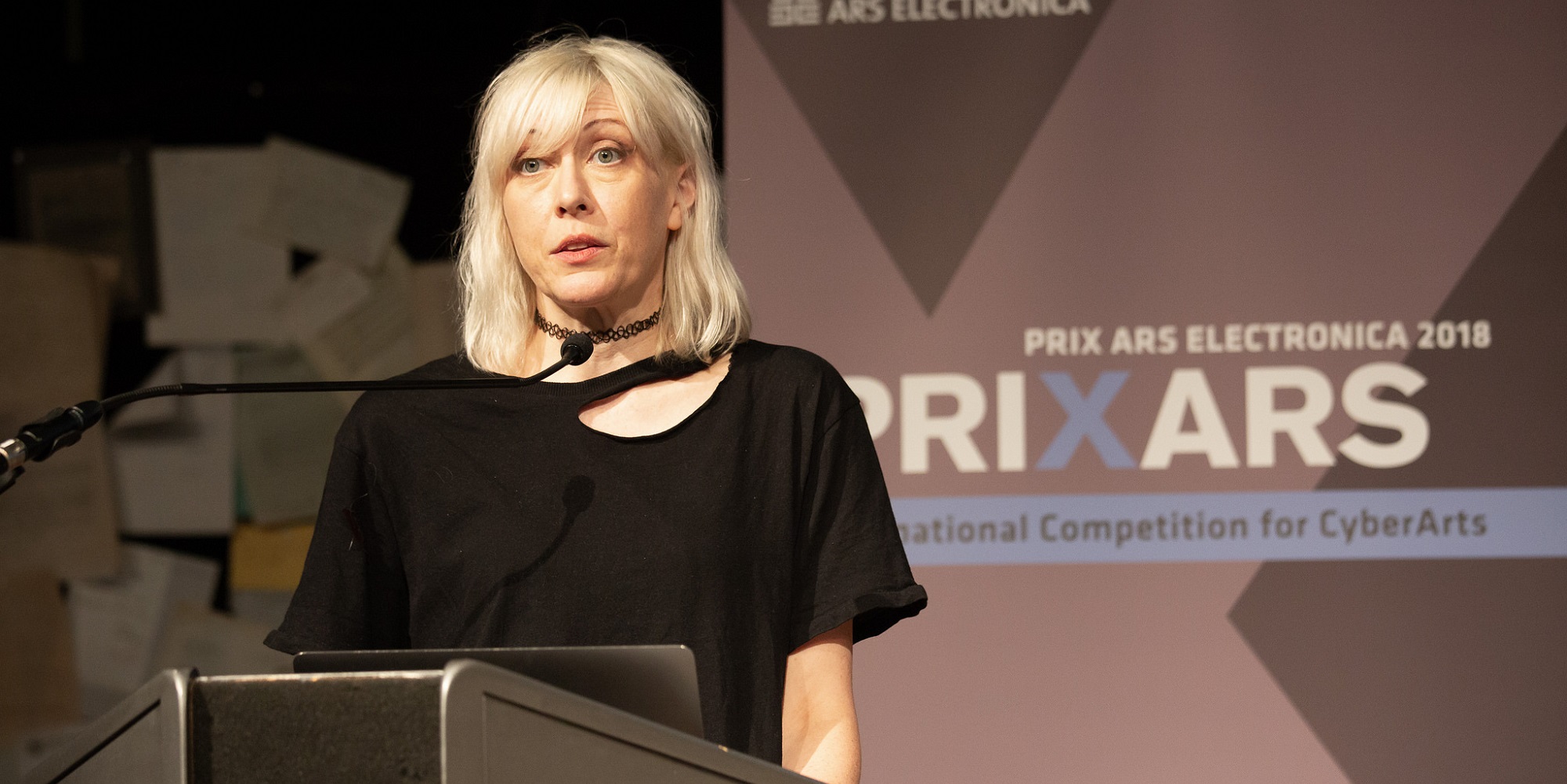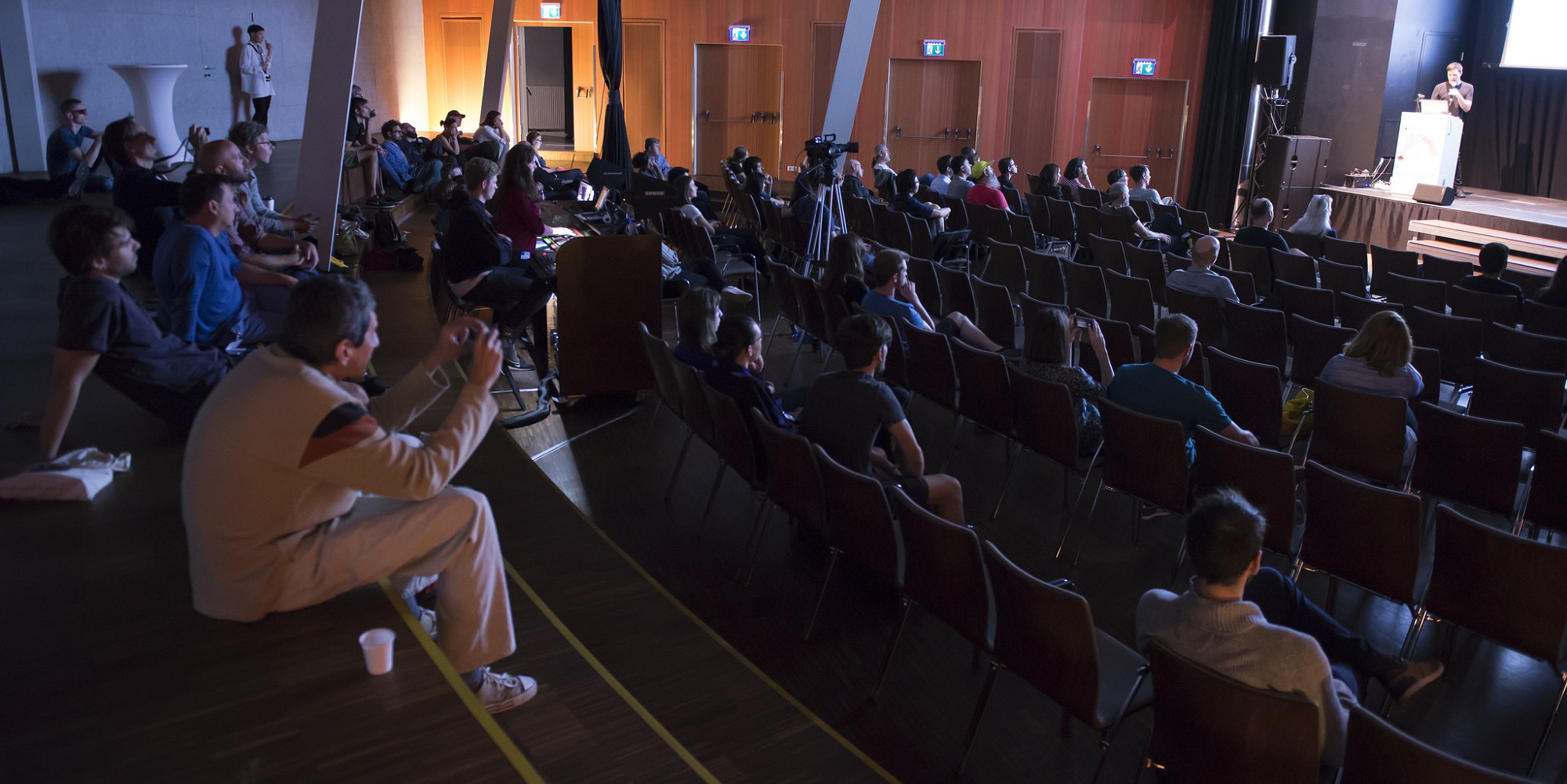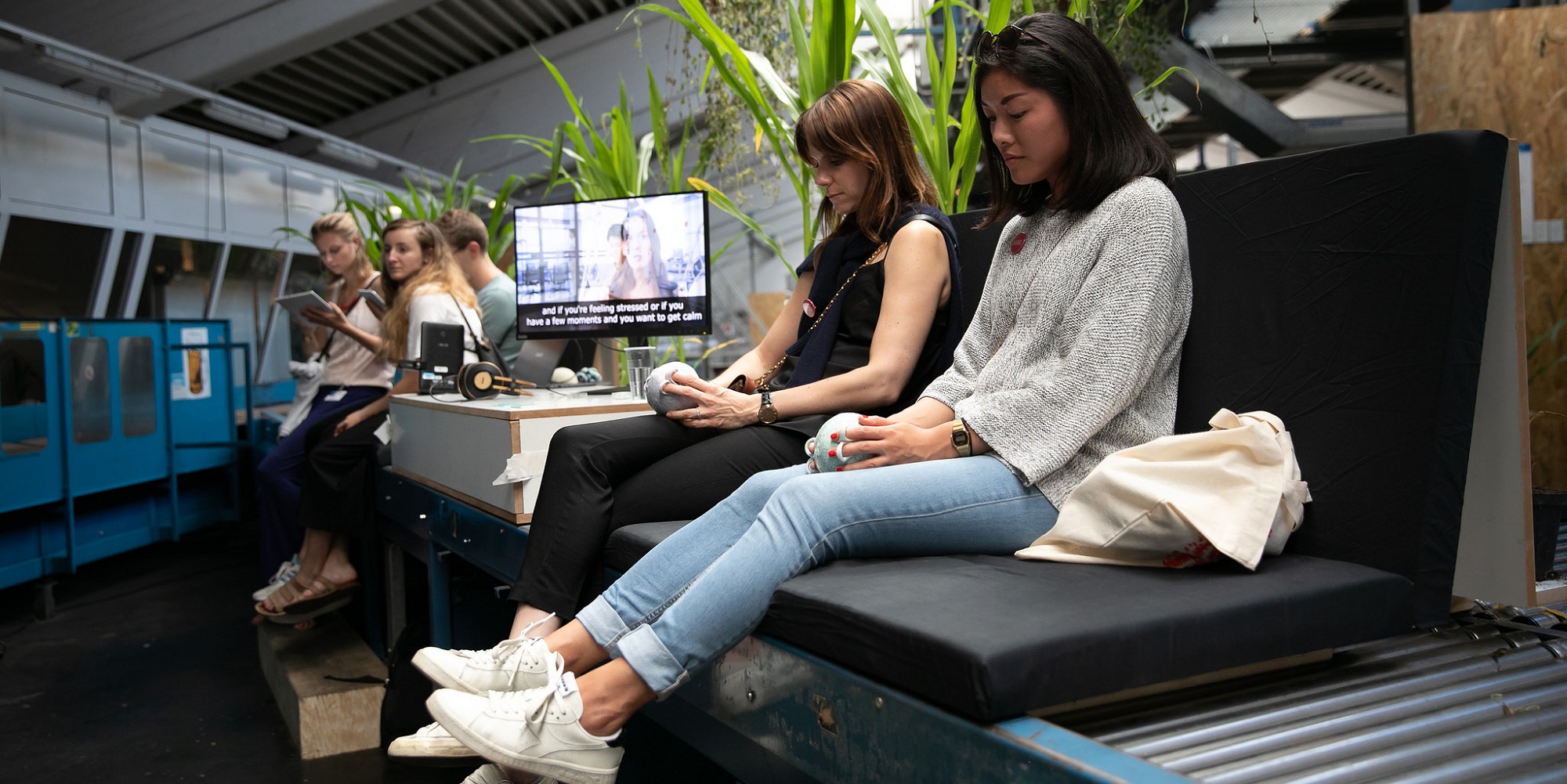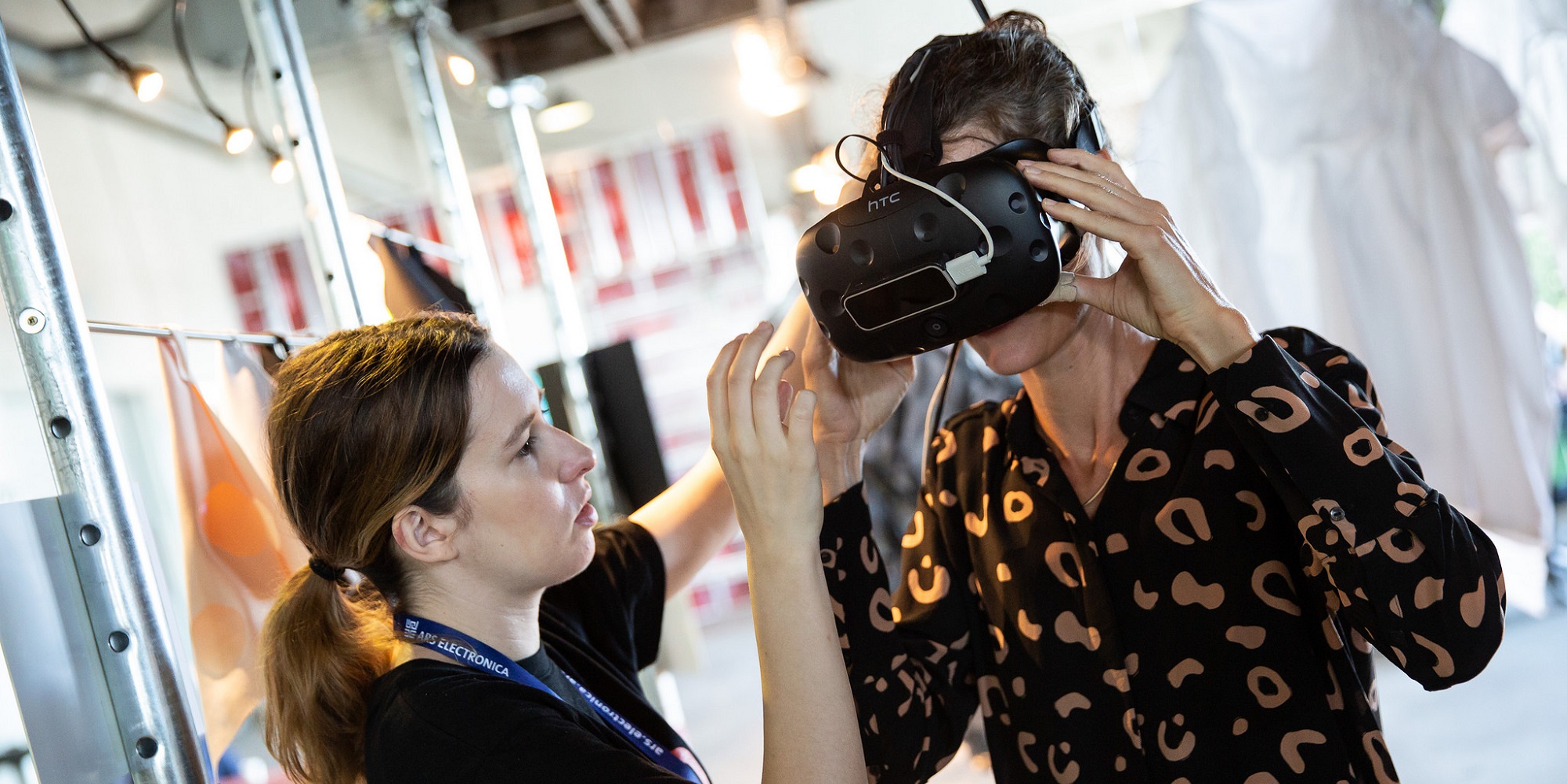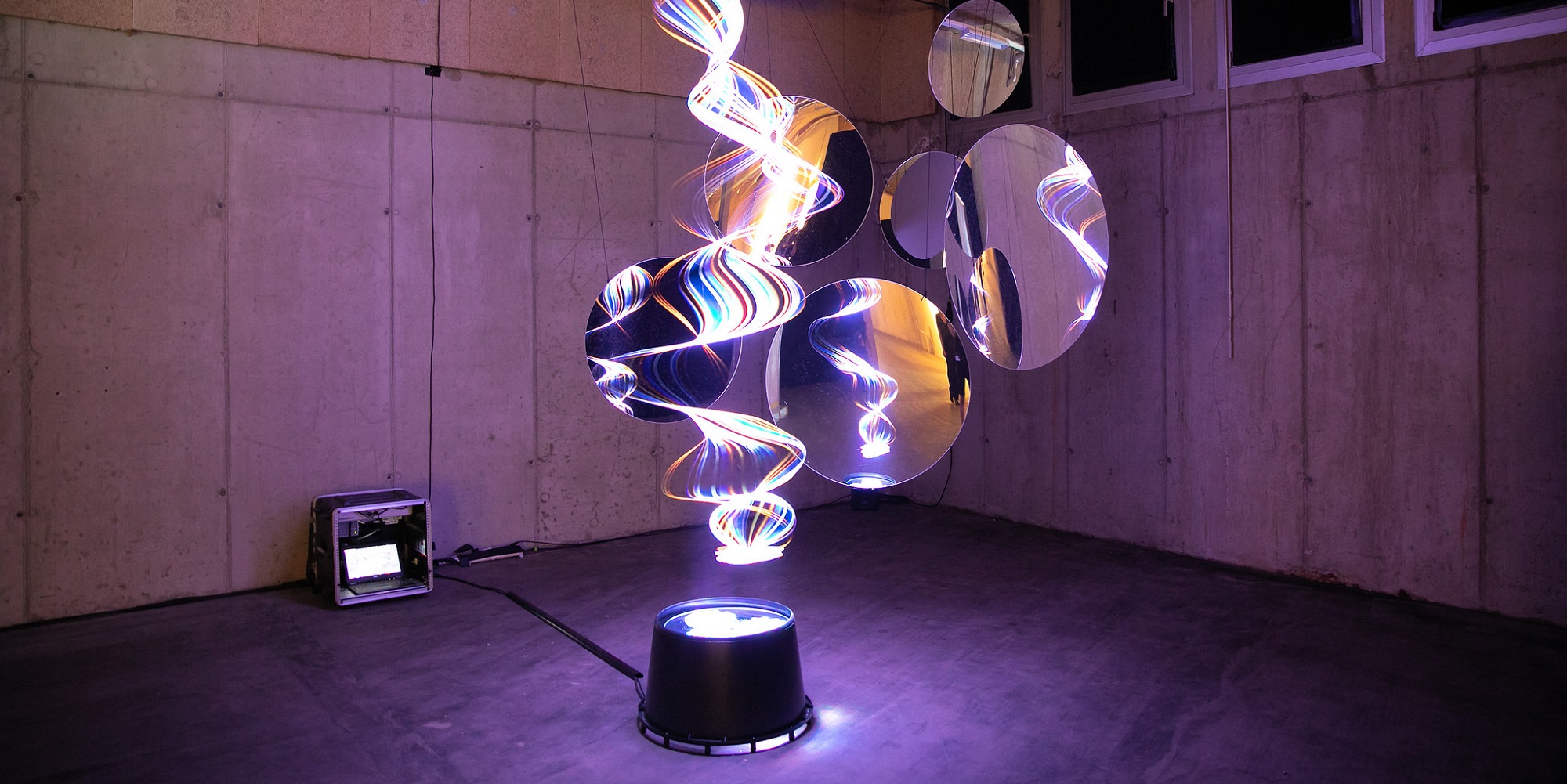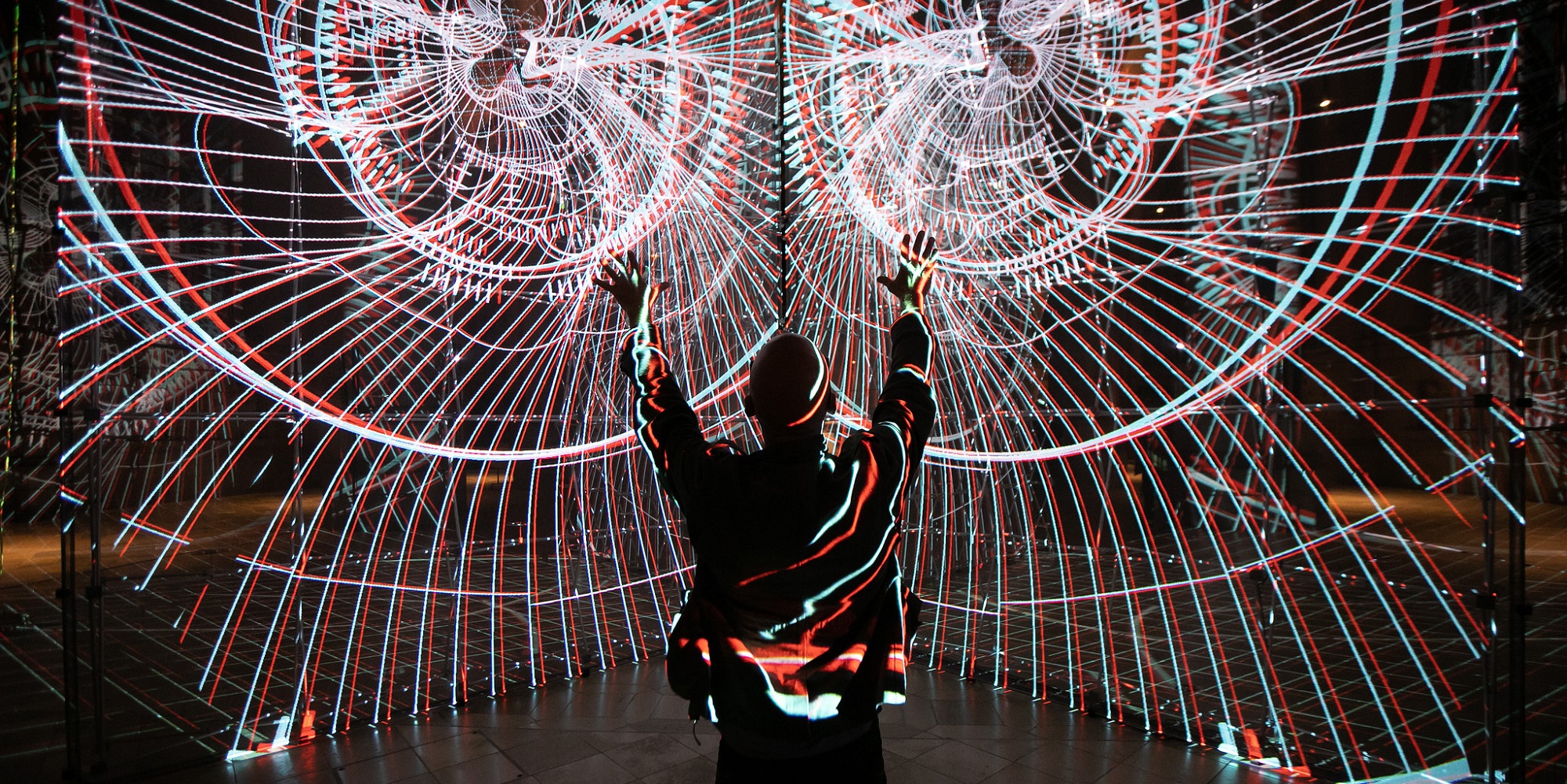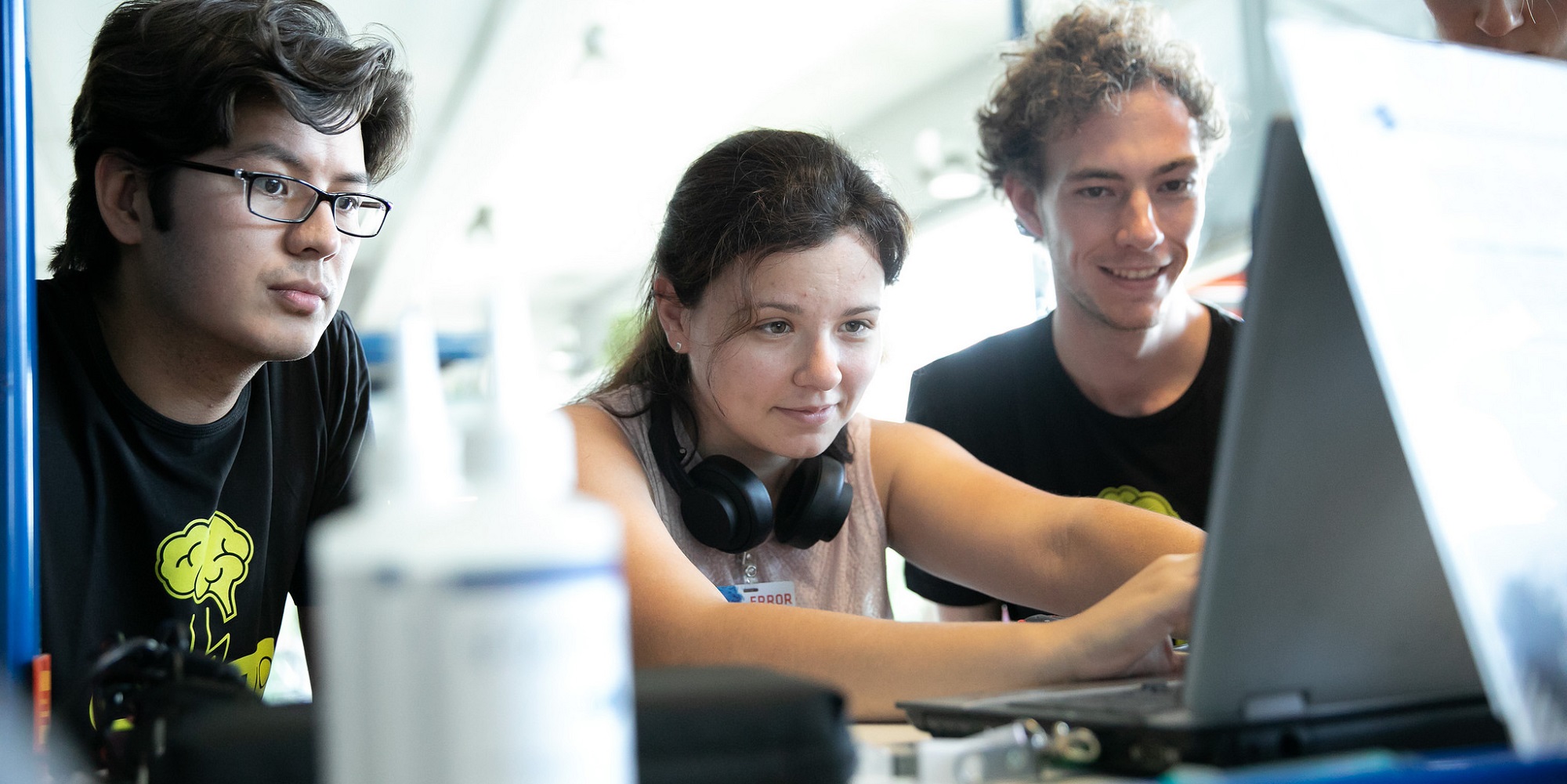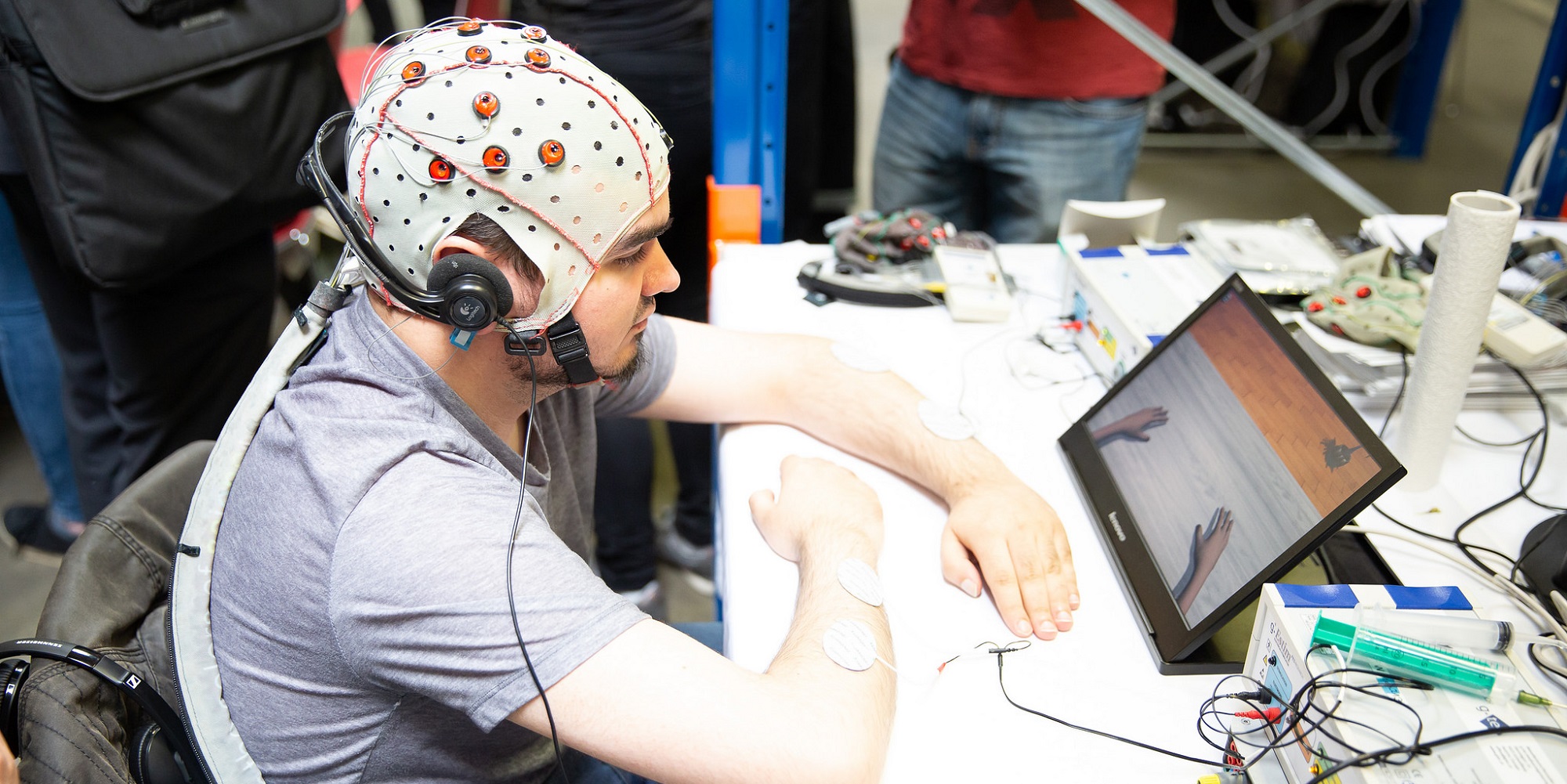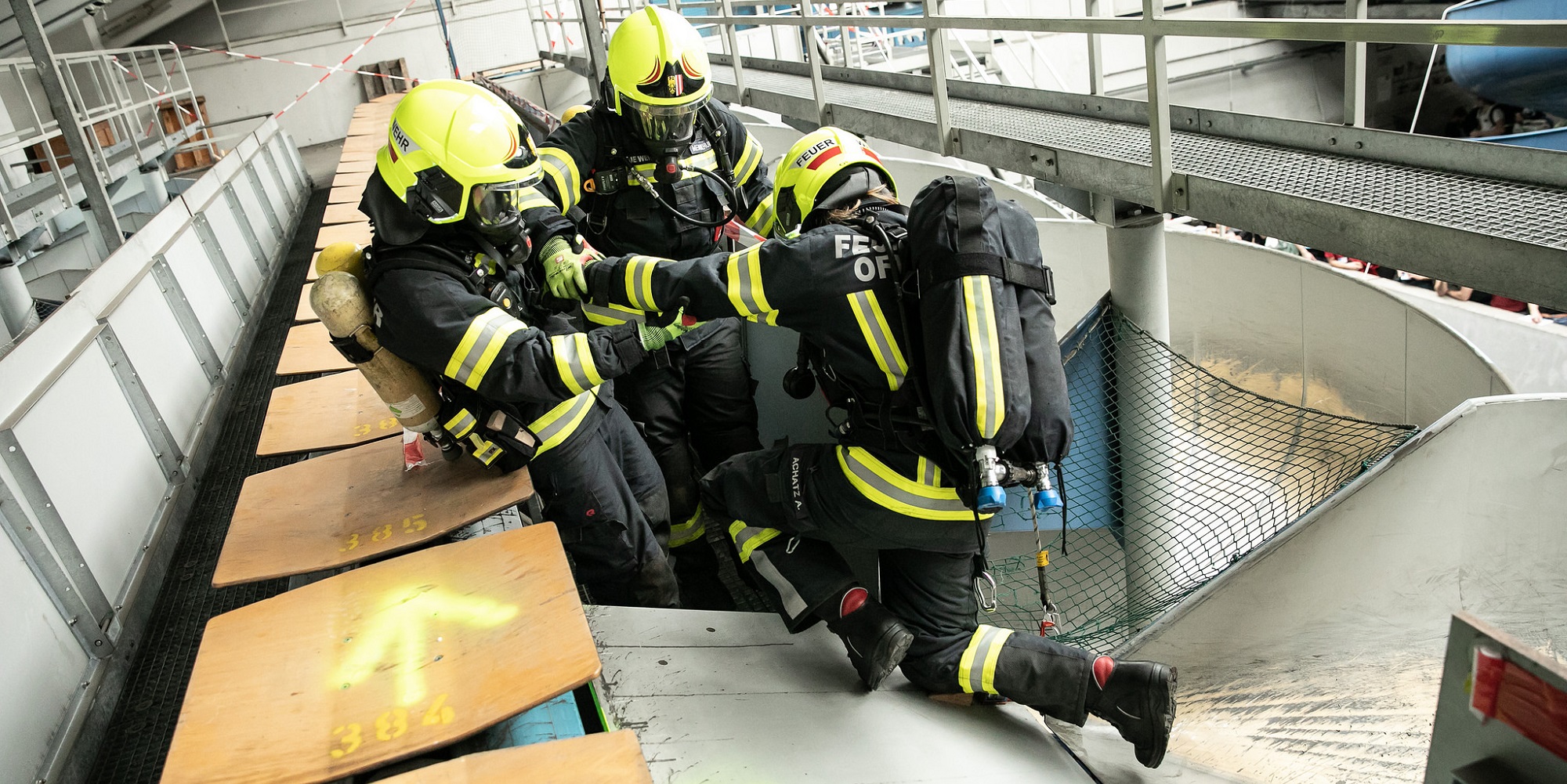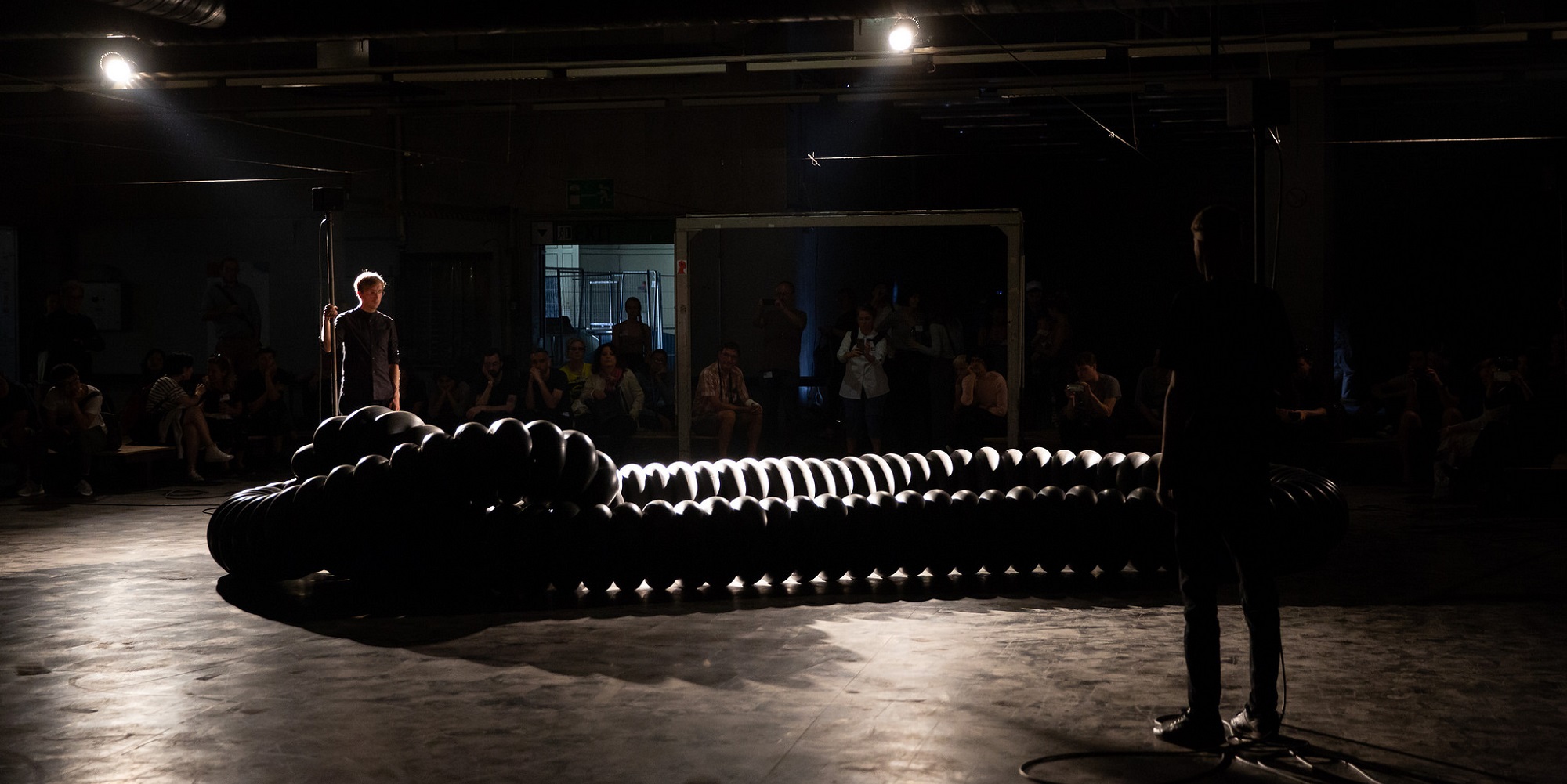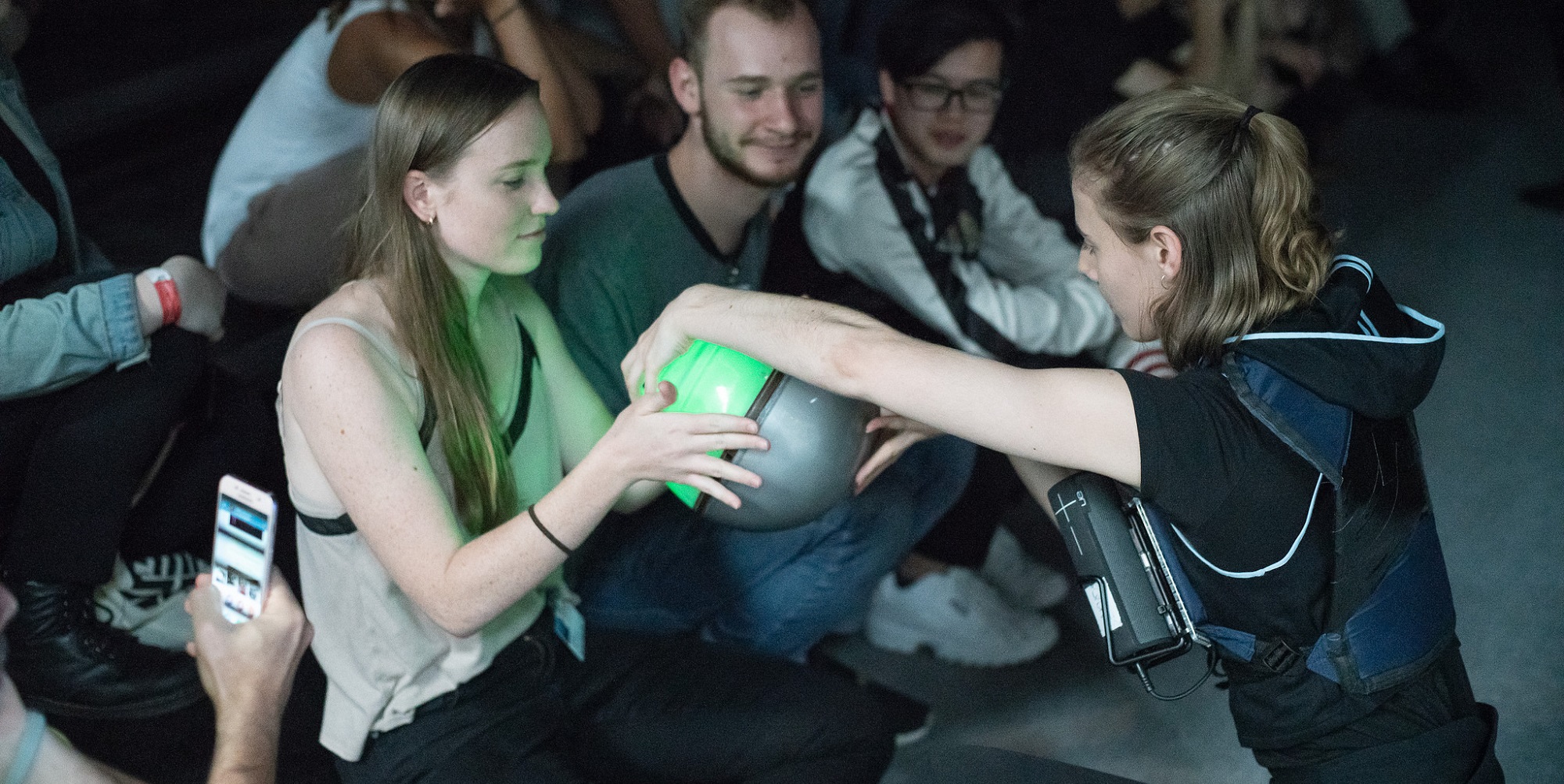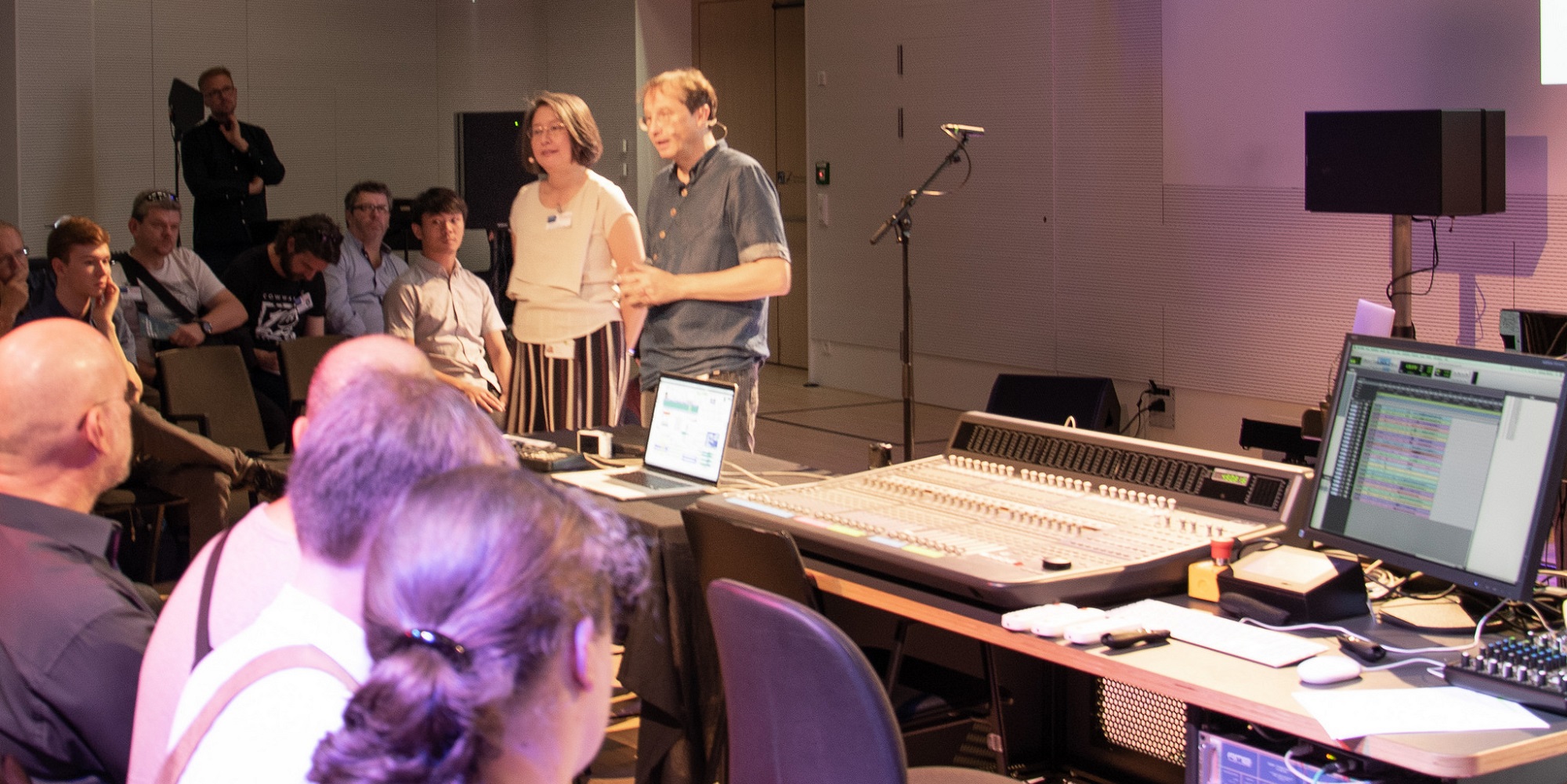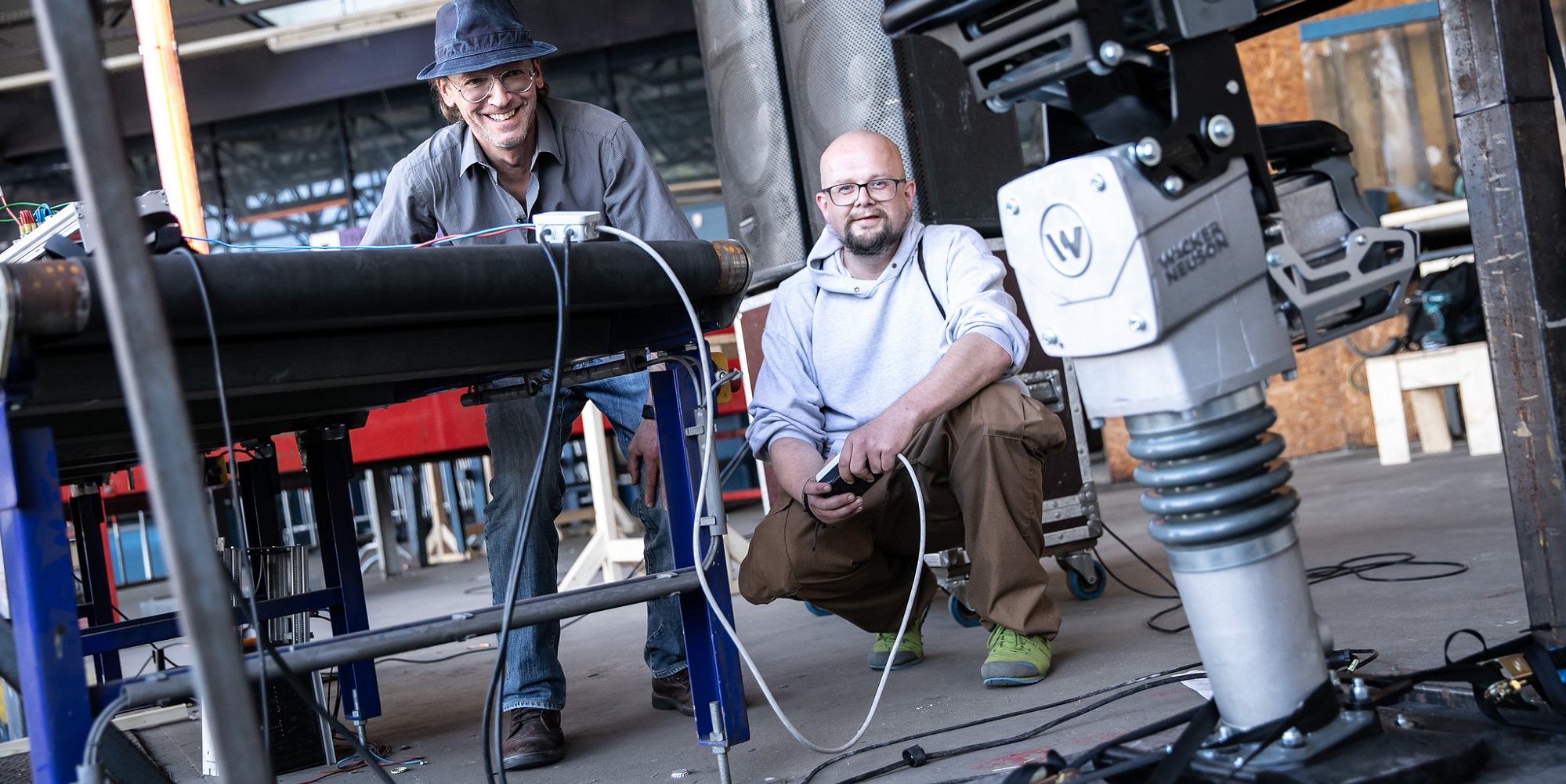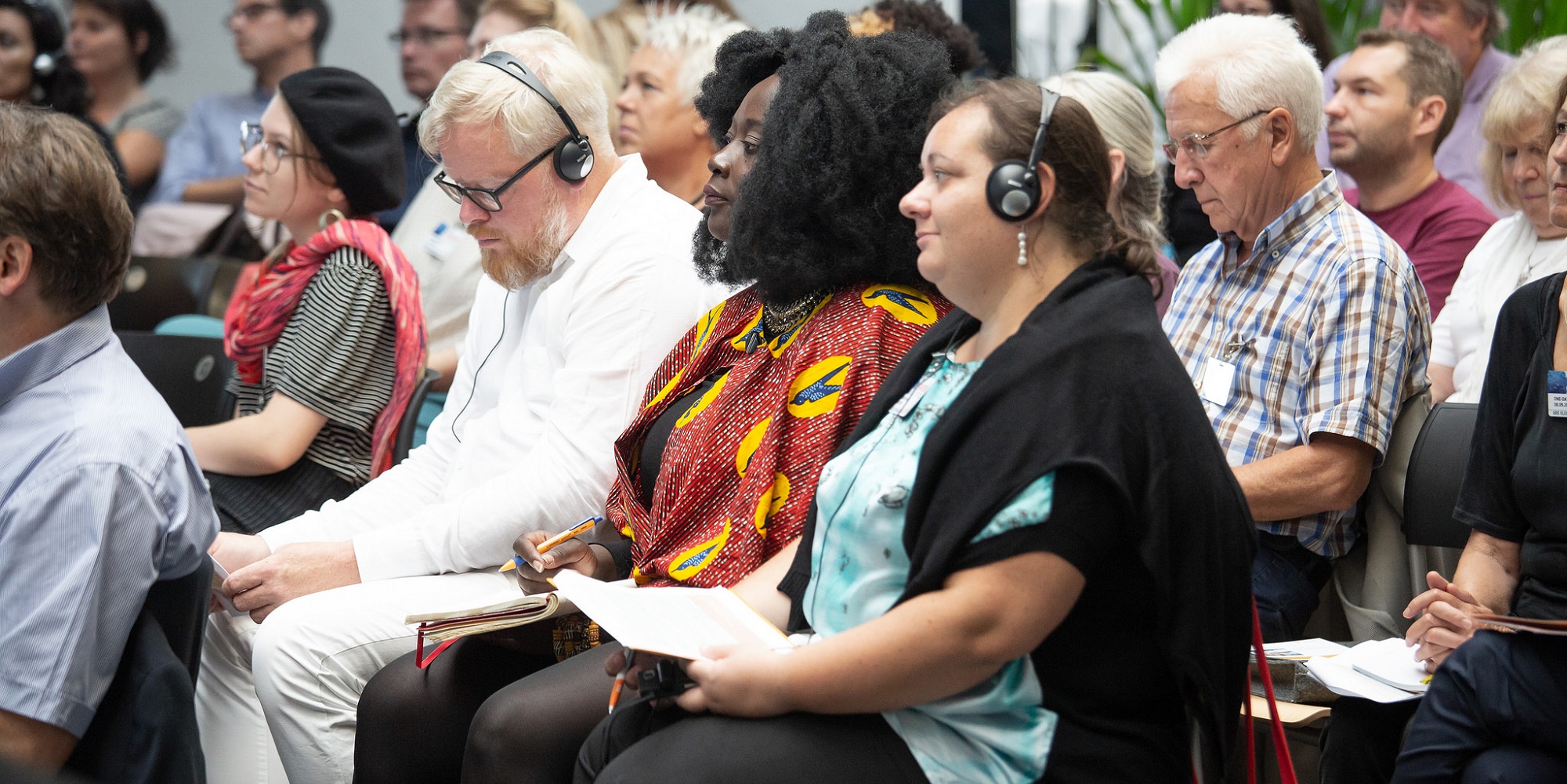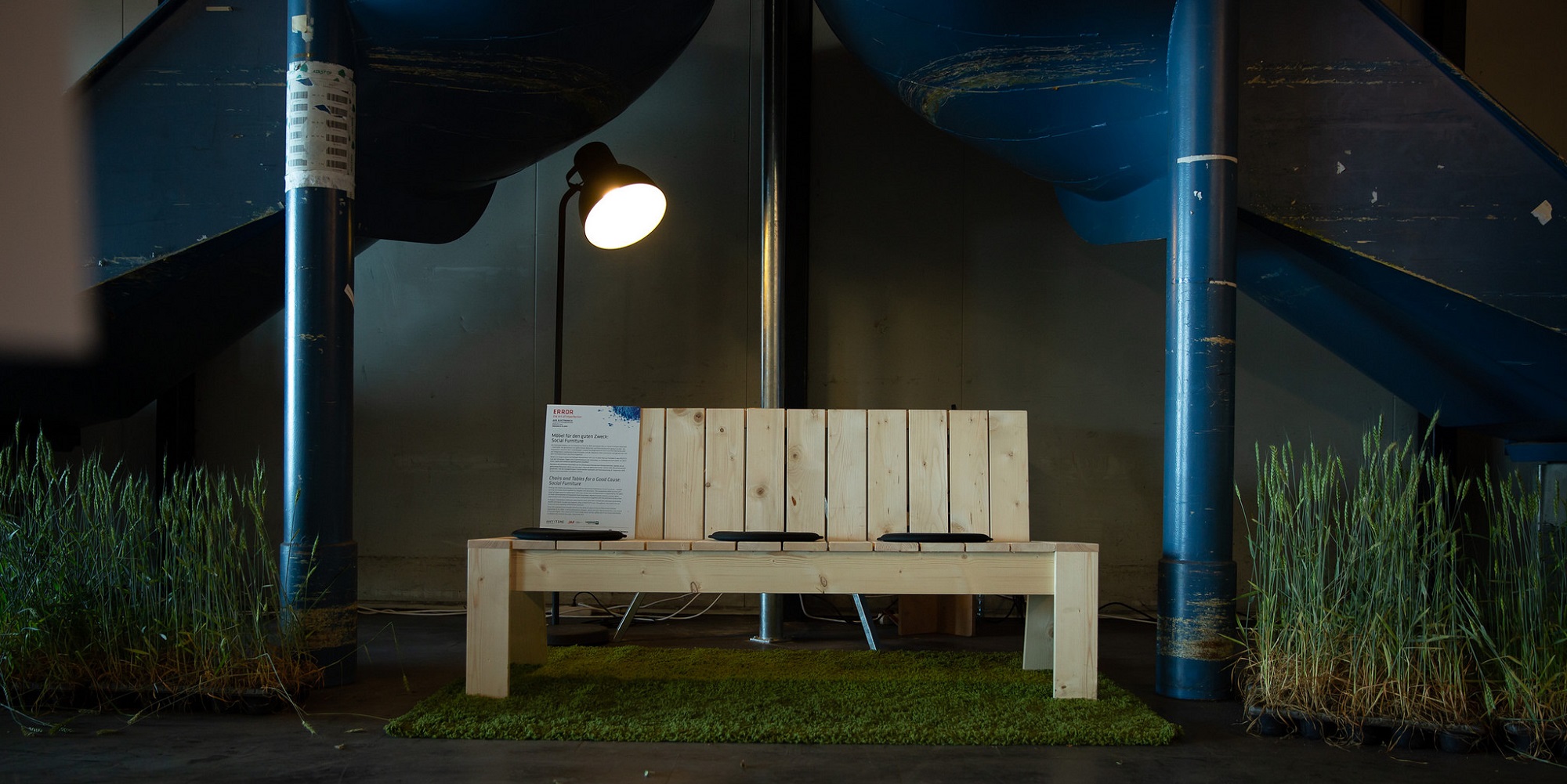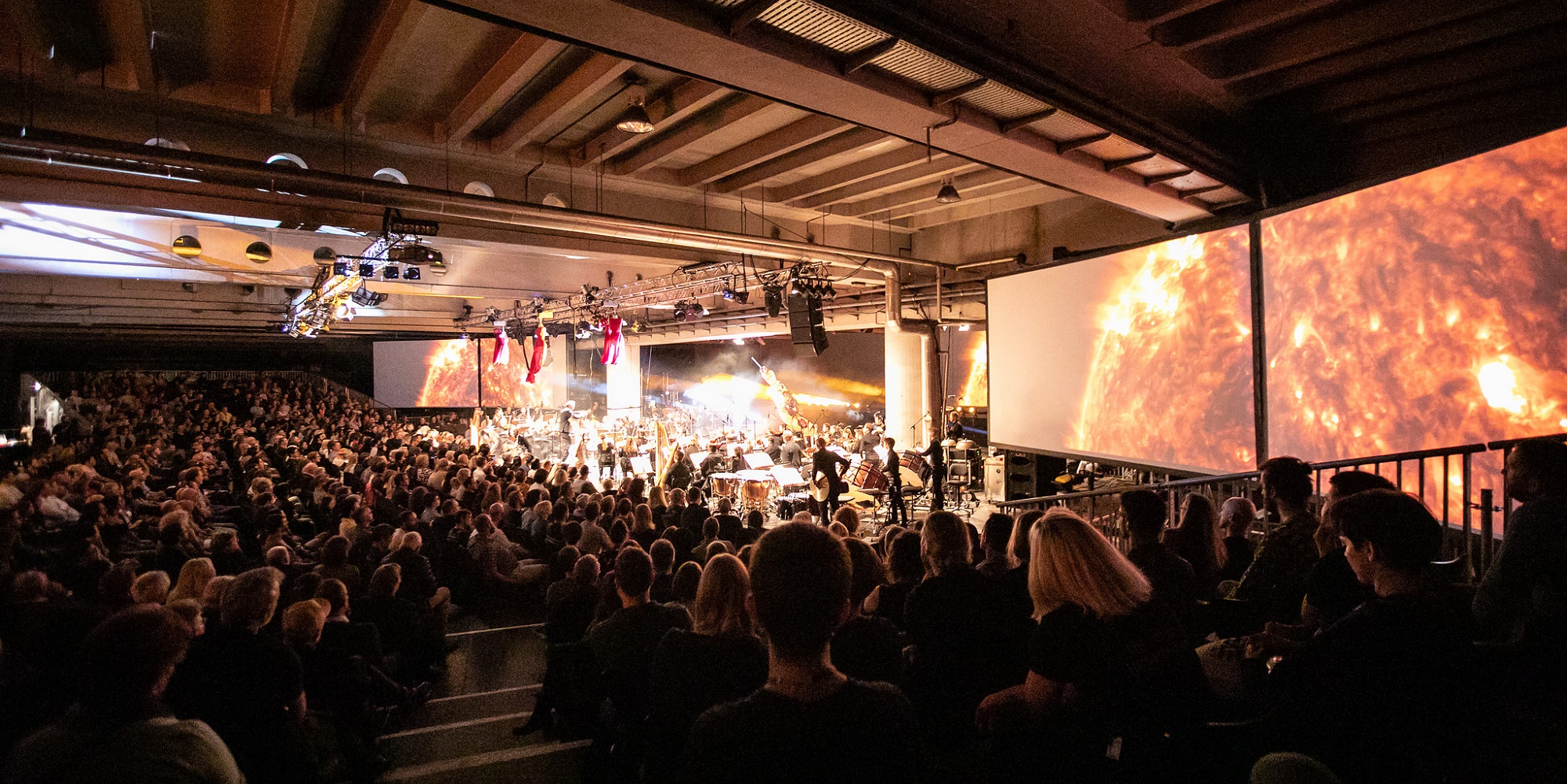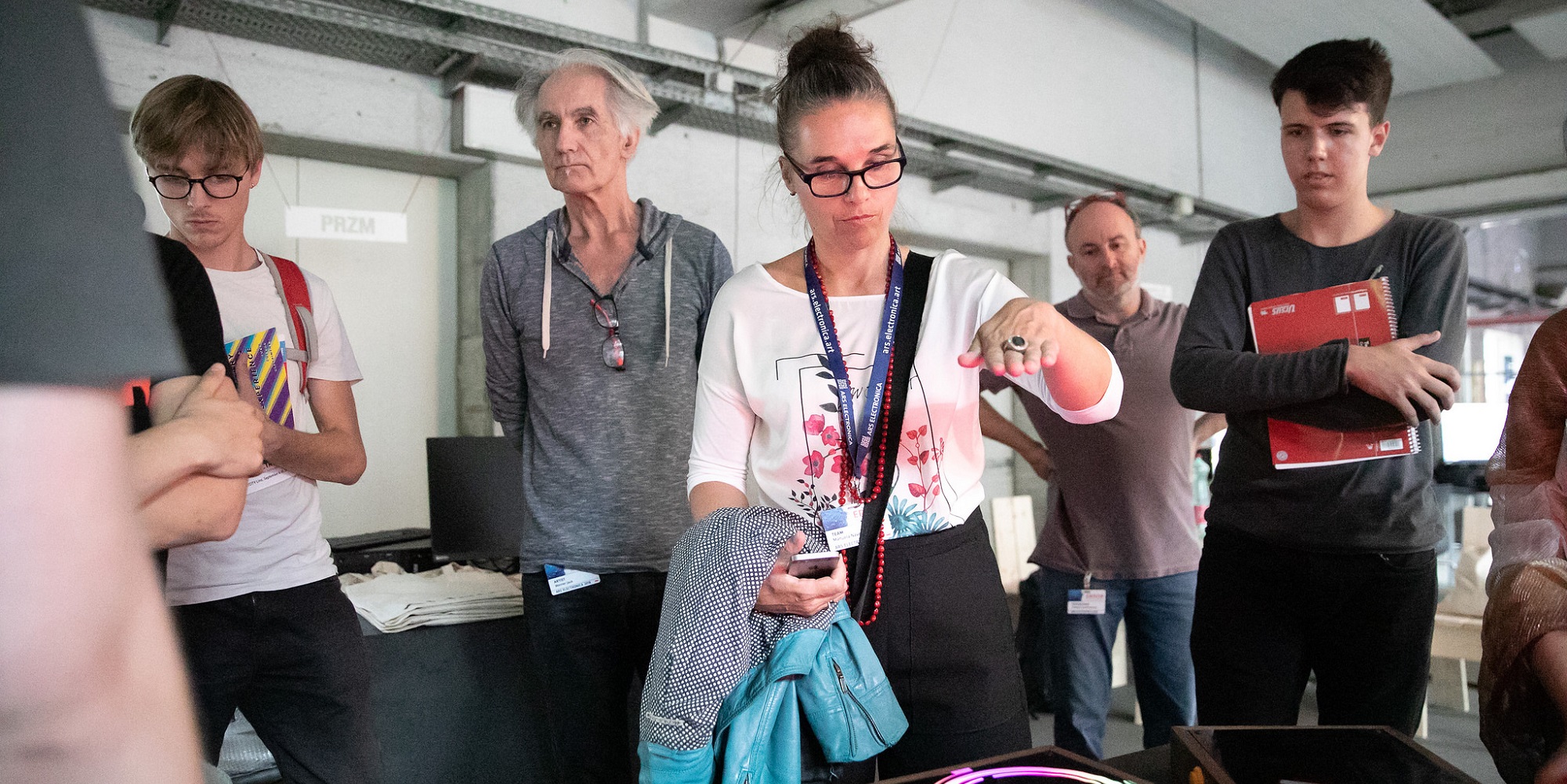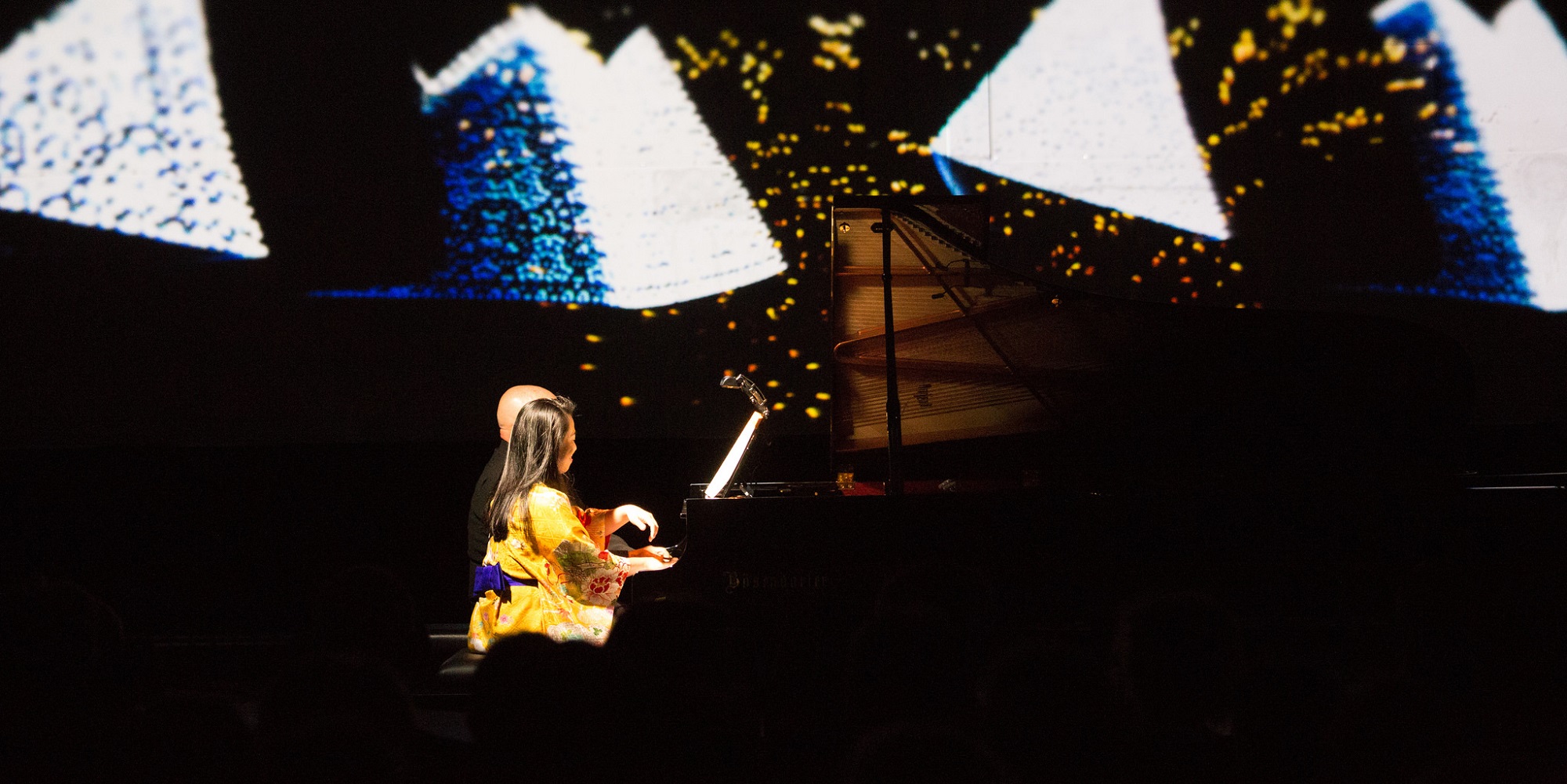The main focus this year was error, the deviation from the norm – but also the error in art, science and technology.
ObOrO / Ryo Kishi. Credit: Martin Hieslmair
Right in the entrance area, part of the theme exhibition started – with “Error, Fake & Failure“, the error was examined under scientific-technological aspects.
+b (ORBIT) / Michael Saup, Andrea Winter, Andreas Erhart. Credit: vog.photo
+b (ORBIT) impressively showed, for example, how many atomic bombs have been detonated since 1945. The visualization plays on a world map made of sugar cubes, one of the earliest foods to be rationed in times of war.
ArchaeaBot / Anna Dumitriu, Alex May. Credit: Vanessa Graf
The second part of the theme exhibition took place in the old bunker of POSTCITY Linz – at “Error in Progress“, the topic was treated in an artistic way.
The Art of Imperfection Conference / The Fragile. Credit: vog.photo
The theme conference was also all about errors: On Thursday, the Opening Symposium gave a first insight, all of Friday revolved around the festival theme and on Sunday, the Academy of Error, the Space Art Panel and Deep Fake concluded the conference.
Get Inspired Presentations, POSTCITY. Credit: Jürgen Grünwald
For the very first time, the Get Inspired Innovation Forum took place at the Ars Electronica Festival in cooperation with the Upper Austrian Chamber of Commerce: Inspiring lectures, workshops and guided tours awaited visitors.
Credit: Tom Mesic
A comprehensive WE GUIDE YOU programme was also set up for all other festival visitors: In Spotlight Tours, Expert Tours and Community Parcours, the huge media art festival was made a little bit more comprehensible by the many tour guides of Ars Electronica.
HIDDEN ALLIANCES: Elisabeth Schimana and the IMAfiction Series. Credit: Tom Mesic
Of course, the other 11 festival locations throughout the city were also very busy. This year, the LENTOS Art Museum hosted the exhibition of Featured Artist Elisabeth Schimana…
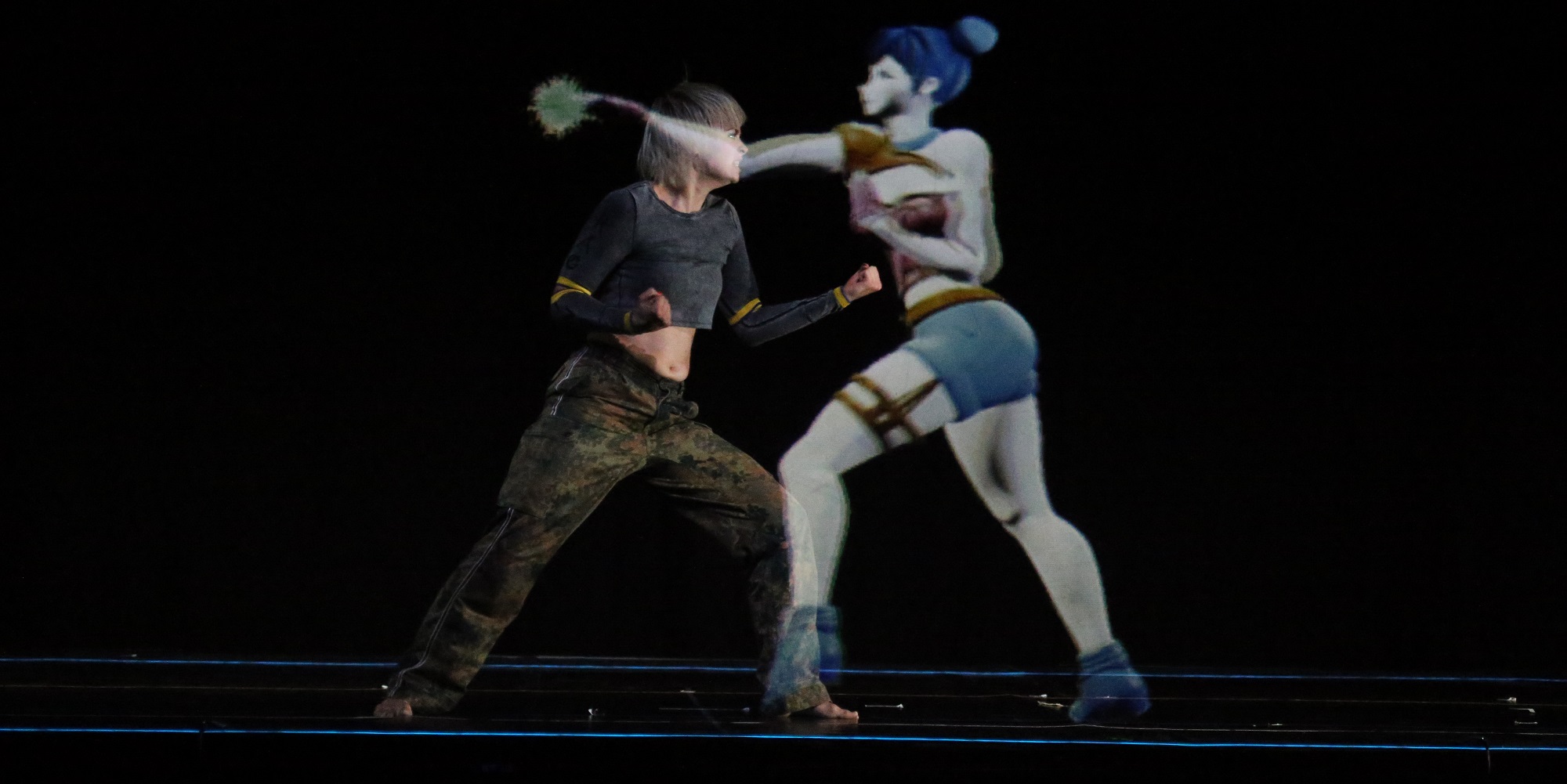
The 4D Box – a holographic live stage. Credit: A. Kolb
…as well as the 4D Box, a holographic stage for live performances.
Microbiome Rebirth Incubator / François-Joseph Lapointe, Marianne Cloutier. Credit: vog.photo
Linz University for Art and Industrial Design hosted the exhibition of the largest guest university this year, Hexagram. In the exhibition “Taking Care” the best projects of students were presented.
Adopt-An-ArtStudent / Dawn Faelnar. Credit: vog.photo
Back at POSTCITY, the local study program Interface Cultures presented their own works. Besides the exhibition from Linz…
MOM / 4125, Jin Yi (Alanis). Credit: vog.photo
…22 other universities had come to Linz to show some works at the 2018 Ars Electronica Festival. It was the biggest Campus Exhibition the festival had ever seen!
Digital Shaman Project / Etsuko Ichihara. Credit: Tom Mesic
The award-winning works of the Prix Ars Electronica were exhibited in the CyberArts Exhibition from the basement to the attic of the Upper Austrian Cultural Quarter, OÖ Kulturquartier.
Even before the festival began, the award-winning artists had met for a welcome drink to get to know each other and exchange ideas.
Concert / EI Wada & Nicos Orchest Lab at OK Night. Credit: vog.photo
That’s also right where Ei Wada gave one of his legendary performances with ELECTRONICOS FANTASTICOS! – it’s hardly possible to create a more lively atmosphere.
Azathot (from the 7 Configurations) / Marco Donnarumma, Margherita Pevere. Credit: vog.photo
The evening program at POSTCITY was also one of the highlights for night owls and partygoers at this year’s festival. The Ars Electronica Opening on Thursday marked the beginning…
Golin (UK) performing at Nightline, POSTCITY. Credit: Tom Mesic
…and on Friday, the evening program continued with the Ars Electronica Nightline. It lasted until the early hours next morning.
Amsterdam’s 3D Printed Steel Bridge” / MX3D & Jooris Laarman Lab. Credit: Tom Mesic
At the STARTS exhibition, science, technology, and the arts were once again in the center of attention.
Giulia Tomasello. Credit: vog.photo
This year, a whole day of lectures, guided tours and panels on festival Friday – STARTS Day – was dedicated to the STARTS initiative, sponsored by the European Commission.
Ars Electronica Gala 2018. Credit: vog.photo
At the festive Prix Ars Electronica and STARTS Prize Gala, the coveted media art prizes were finally awarded.
1st row (from left to right): Eliot Higgins (Digital Communities), Mathilde Lavenne (Computer Animation), LarbitsSisters (Interactive Art+), Vincent Thierry („Levers and Buttons“ – u19), Giulia Tomasello (STARTS – Artistic Collaboration – Future Flora), Gijs van der Velden (STARTS – Innovative Collaboration – MX3D), Nina Czegledy (Leonardo/ISAST, Visionary Pioneers)
2nd row (from left to right): Lorenz Gonsa, Martin Hatler und Samuel Stallybrass („Levers and Buttons“ – u19), Joris Laarman, Tim Geurtjens (STARTS – Innovative Collaboration – MX3D), Roger Malina (Leonardo ISAST – Visionary Pioneers), Hannes Leopoldseder (Mitbegründer Ars Electronica)
Credit: Tom Mesic
Among the award winners was the Leonardo/ISAST network, this year’s Golden Nica for Visionary Pioneers of Media Art…
Leonardo Birthday Party. Credit: Tom Mesic
…which celebrated its 50th anniversary this year. One of the many birthday parties around the globe took place right in the middle of the Ars Electronica Festival!
Mary Flanagan. Credit: Tom Mesic
The winners of Prix Ars Electronica also had their say at the Prix Forums during the festival, where they were able to explain and present their works.
Credit: Martin Dorfer
As always, a special focus was placed on one of the categories, computer animation: In the Animation Festival and the lecture series Expanded Animation, festival visitors could learn more about techniques, artists and animations. This year’s theme was “Interfaces in Motion”.
Swarm Arena / NTT, Ars Electronica Futurelab. Credit: vog.photo
The Open Futurelab also featured animations, albeit of a different kind: During the presentation of Swarm Arena, ground robots and drones transformed air and ground into a single large canvas.
Reflect / Noga Sapir. Credit: vog.photo
High above the hustle and bustle of the festival, a new exhibition took place for the first time: at Himatsubushi – The Art of Time-Killing, visitors could stroll along and under the roof of POSTCITY Linz and discover projects on the theme of time.
Generative Rendered Design / Michael Wieser, Simon Hochleitner, Viktor Weichselbaumer. Credit: Tom Mesic
Along the Himatsubushi Trail, you could also catch a glimpse of the exhibition Practice of Art & Science, where this year’s focus was on projects in the field of fashion…
A glitch in the stars / Space Exploration Initiative Exhibition Space Exploration Initiative, MIT Media Lab. Credit: vog.photo
…but also in the field of Space Art.
Tycho; Test One / Paul Friedlander. Credit: vog.photo
Meanwhile, deep in the POSTCITY bunker and old parcel storage space, galleries in the Gallery Spaces exhibited works from their collections.
Jonathan & Brigitte Meese. Credit: Tom Mesic
This is also where several talks and discussions with exhibiting artists took place, like Jonathan and Brigitte Meese.
Credit: Tom Mesic
At the Future Innovators Summit – this year for the fifth time in a row! – creative minds from a wide variety of disciplines from all over the world met in the Think- and Do-Tank to think about questions of the future.
„SAY_SUPERSTRINGS“ / dastrio (KR/DE), OUCHHH. Credit: vog.photo
At Deep Space 8K in the Ars Electronica Center, visitors let themselves be overwhelmed by fascinating visual worlds – sometimes even with live music.
LightTank / Uwe Rieger, Yinan Liu (arc/sec Lab). Credit: Tom Mesic
Even St Mary’s Cathedral in Linz turned into a festival location: Here, Uwe Rieger and Yinan Liu showed their installation LightTank.
Credit: vog.photo
At U19 – CREATE YOUR WORLD, the festival within the festival for kids and youngsters, even the smallest visitors got to enjoy themselves.
Conny Lee at u19 Ceremony. Credit: Tom Mesic
Finally, at the u19 Ceremony, the youngest winners of Prix Ars Electronica were honored.
Credit: Gregor Tatschl
Among the many workshops, exhibits and Open Labs at U19, a Hebocon took place for the first time this year – a competition of especially (and intentionally) badly built robots.
BR41N.IO Hackathon / g.tec medical engineering GmbH . Credit: vog.photo
The participants of the BR41N.IO Hackathon also had to build and program – best they could. They had 24 hours to implement creative projects with brain-computer interfaces.
Right next to them, Bugfix the Brain showed how these interfaces are already being used in the field of medicine, in particular for stroke victims.
Emergency Error Battle / Oö. Landes-Feuerwehrverband, Rosenbauer International AG, Ars Electronica, g.tec medical engineering GmbH. Credit: vog.photo
At the EMERGENCY ERROR BATTLE on Saturday, the brain-computer-interfaces were also in use. The challenge for volunteer fire brigades from all over Upper Austria had the participants faced with both traditional and modern challenges, right in the middle of the festival.
πTon / Cod.Act. Credit: Tom Mesic
Cod.Act tamed their installation/creature πTon at Ground Floor…
Klangschlange / Queensland University of Technology. Credit: Robert Bauernhansl
…while visitors could directly interact with the soundline (Klangschlange) themselves.
Credit: Magdalena Sick-Leitner
At the Digital Theater Network Meeting, everything revolved around the theater of the future – such as Stage Your City, an interactive city experience.
Once again this year, BIO Austria provided yummy delicacies from the region: on the third day of the festival at the farmer’s market, visitors could taste their way through Upper Austrian specialities.
Se-Lien Chuang, Andreas Weixler. Credit: Gregor Tatschl
On the same day, Sonic Saturday took place: A day focused on music and sound art at the Anton Bruckner Private University. In guided tours, lectures and the big concert Medium Sonorum, the topic was dealt with extensively.
The Vibrationeers / Bernhard Breuer, Didi Bruckmayr, Chris Bruckmayr, Stefan Fuchs, AS50e Akkustampfer / Wacker Neuson. Credit: vog.photo
The Vibrationeers also made a lot of noise: they transformed Wacker Neuson’s battery-powerd rammers into musical instruments.
Credit: Tom Mesic
This year’s ZusammenHelfen conference focused on encouragement – for volunteers, helpers and refugees.
Credit: Tom Mesic
It’s exactly these groups of people who have helped build Social Furniture this year: a social project in which furniture was built for the festival and, subsequently, for the SOS Human Rights House.
The Berlioz Project. Credit: vog.photo
The Big Concert Night was once again an absolute festival highlight this year: with performances from digital music, classical music (with the Bruckner Orchestra conducted by Markus Poschner) or dance, it was a truly impressive show.
Manuela Naveau at Composing LAB. Credit: vog.photo
The last day of the festival was once again dedicated to music: On Music Monday, an extensive guided tour led through the Sound Art projects at several festival locations.
Maki Namekawa and Dennis Russell Davies. Credit: Tom Mesic
Maki Namekawa and Dennis Russell Davies performed together at the piano on Monday evening, at the 614th and last event of this year’s festival, thus closing five intense days of the festival.
Now it’s time to reflect on this year’s Ars Electronica Festival – and maybe start looking forward to the next edition already…
